- Very efficient - yet peppy - hybrid drivetrain
- Excellent interior quality and ergonomics
- Solid ride and handling balance
- Steep $6,400 hybrid premium
- Hybrid only available at the top of the range
- No spare wheel
We recently tested Honda’s new ZR-V small-to-mid-sized SUV and came across quite impressed with its high level of all-round talent, even in mid-spec VTi L spec. It’s well built, features excellent quality throughout, is packed full of equipment, drives well and even though it’s not cheap, we think it’s good value for money. With hybrid drivetrains veing all the rage about currently, it’s no surprise to see that Honda launched a semi electrified version of the ZR-V. Is the hybrid 2023 Honda ZR-V e:HEV LX the model to buy? Let’s find out.
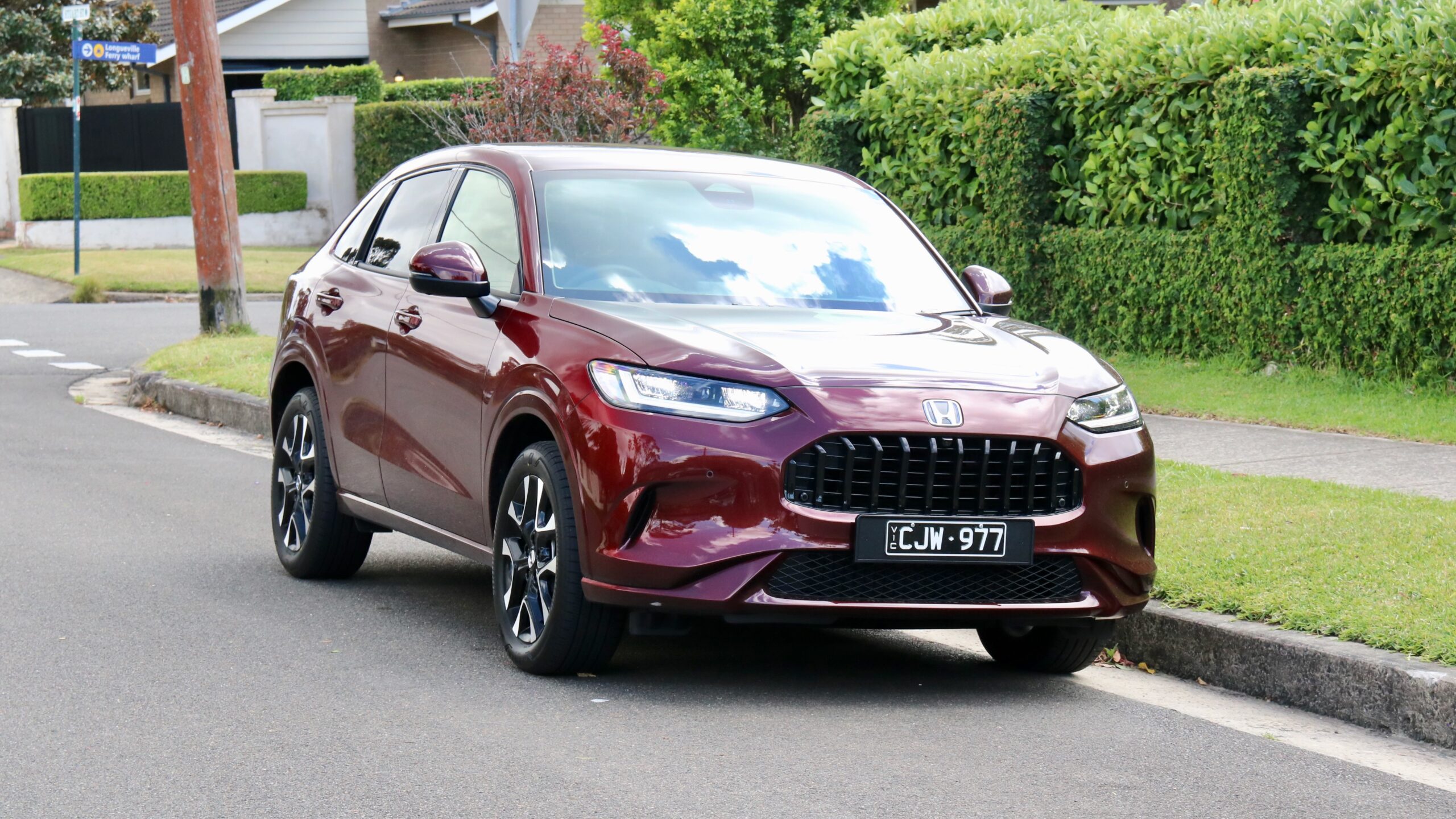
Underpinned by the same platform as the Civic and new CR-V, the ZR-V is essentially a jacked up version of the Civic. That’s no bad thing as the Civic is a very good car, and we’ve found that the ZR-V is largely the same too – but how does it compare to rivals?
How much does the 2023 Honda ZR-V e:HEV LX cost to buy?
While the entry-level ZR-V VTi costs $40,200 drive away, we tested the top-spec hybrid e:HEV LX, which is priced at $54,900 drive away – which is, weirdly enough, $100 less expensive than the smaller Civic hybrid that uses the same drivetrain.
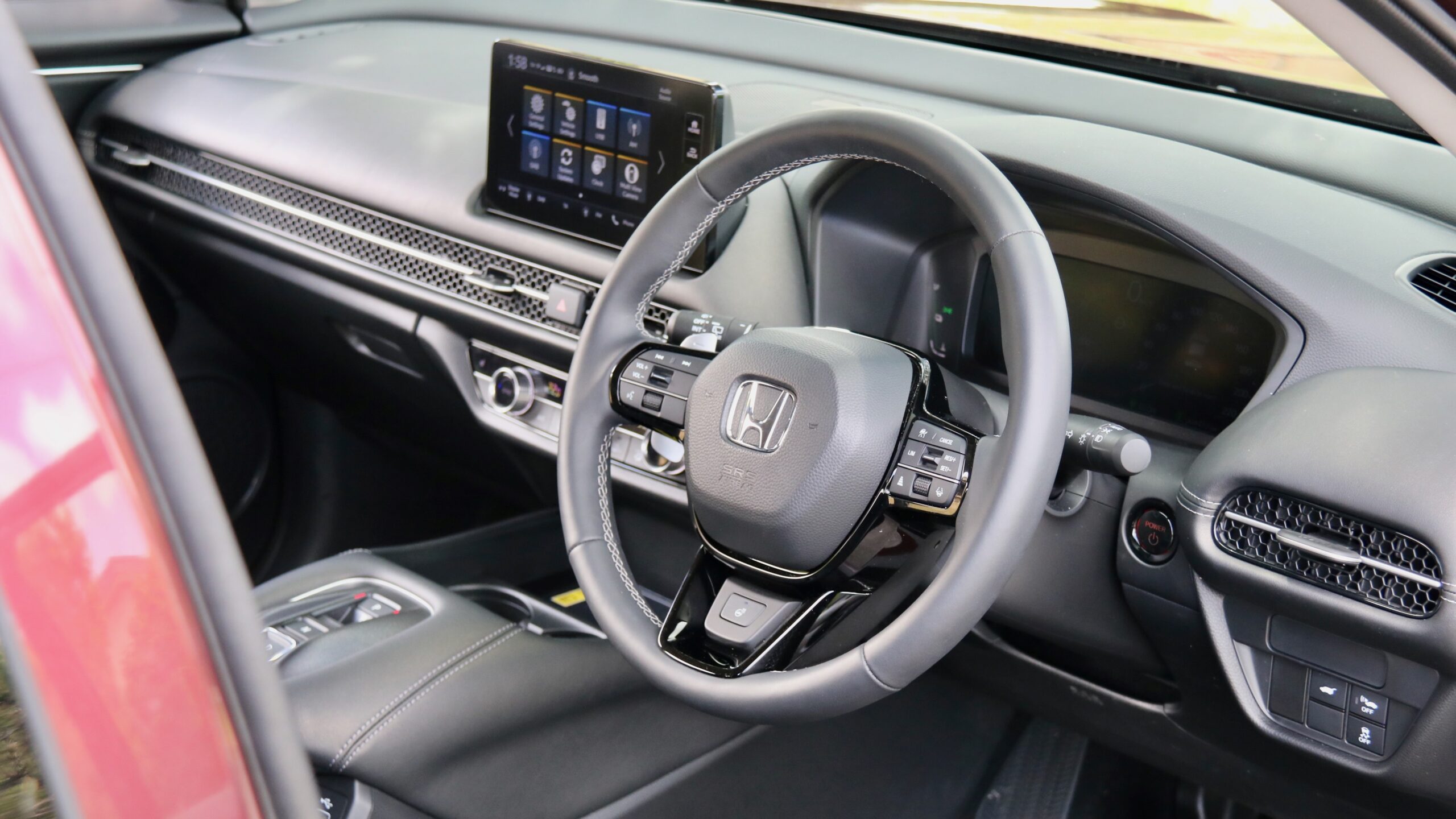
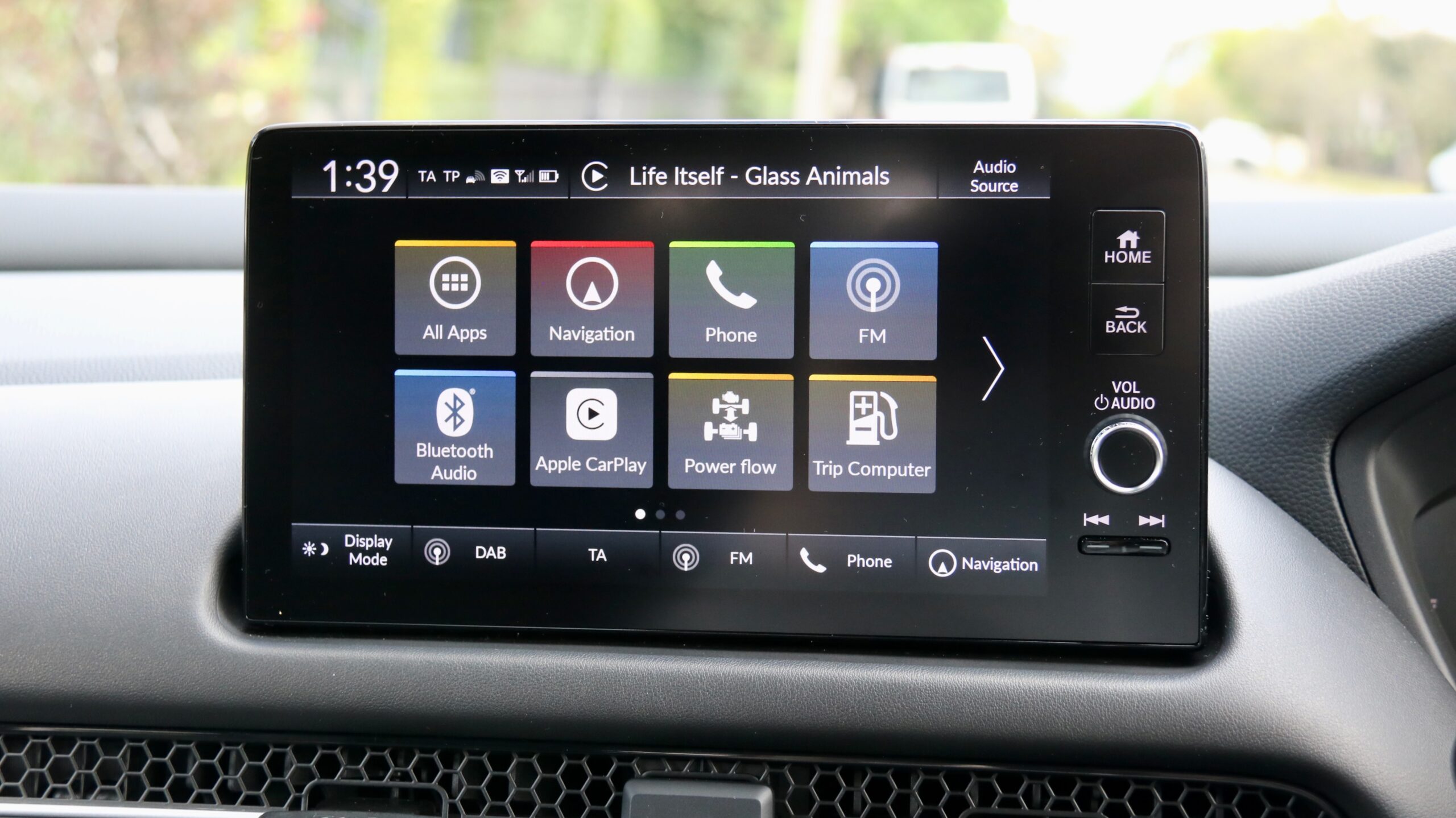
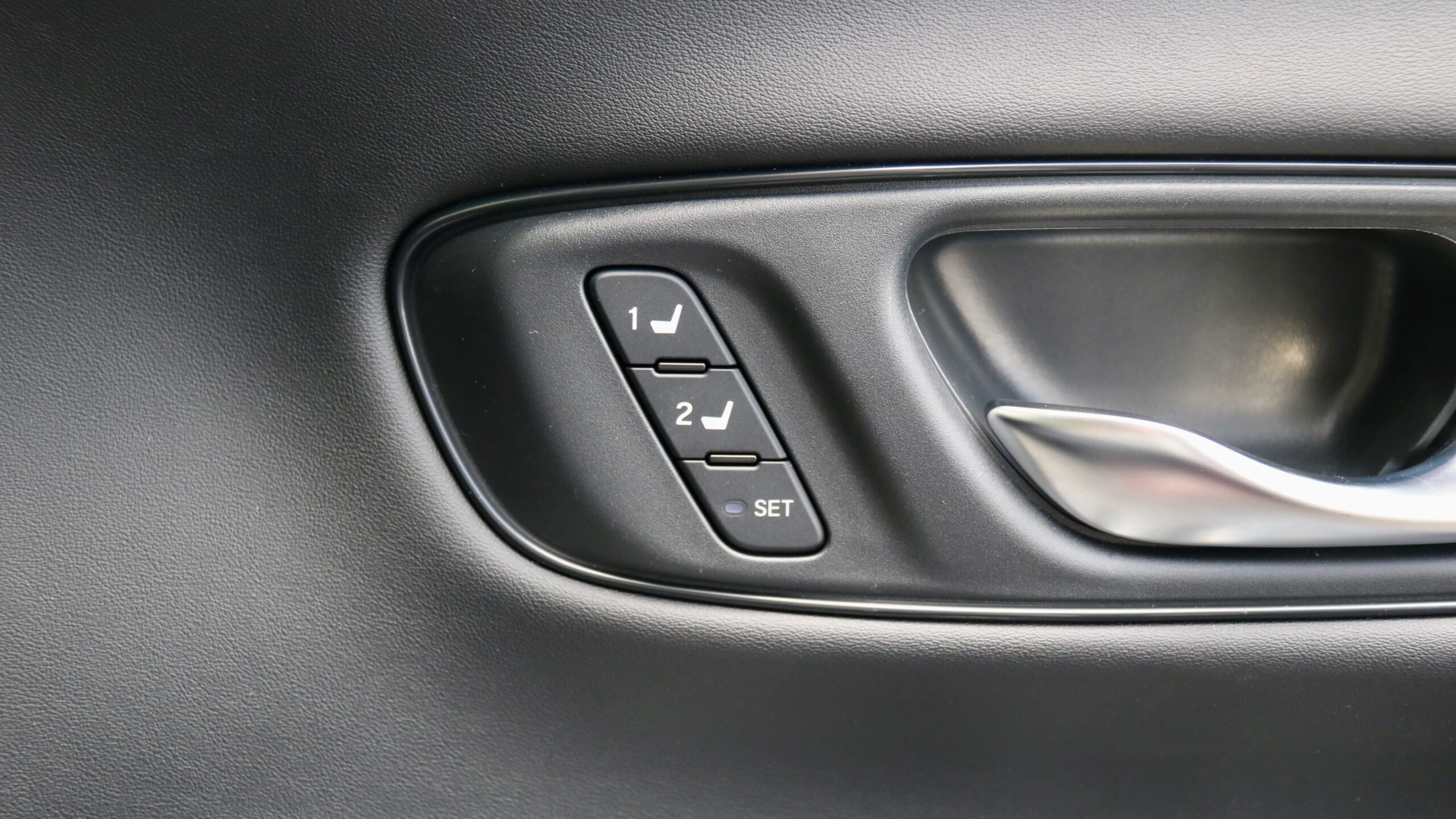
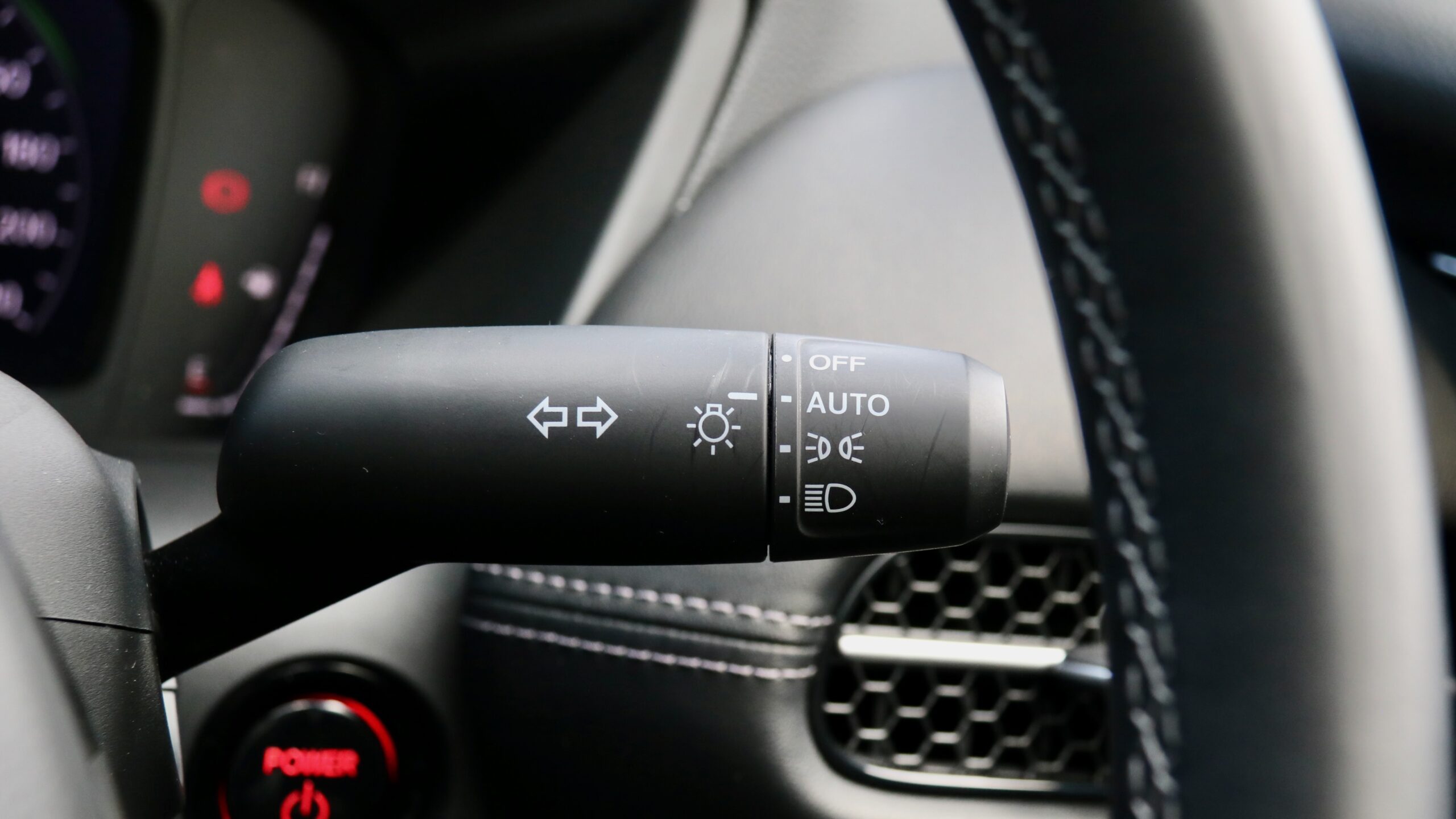
Standard equipment on the ZR-V e:HEV LX includes:
- 18-inch alloy wheels
- Automatic dusk- and rain-sensing all-LED exterior lighting
- Automatic wipers
- Keyless entry and push button start
- Heated and auto-folding exterior mirrors with passenger auto-dropping in reverse
- Electric bootlid with kick-to-open and walk away lock functionality
- Rear privacy glass
- Drive mode selection
- Dual-zone climate control with rear air vents
- Heated leather steering wheel with paddle shifters
- Leather upholstery
- 8-way electric front seats with heating and driver’s memory functionality
- Heated outboard rear seats
- 12.3-inch digital driver’s display
- 9.0-inch touchscreen with live services and over-the-air updates
- Wireless Apple CarPlay and Android Auto
- Wireless phone charger
- 3x USB-C ports and 1x USB-A port
- AM/FM/DAB+ digital radio
- Satellite navigation
- 12-speaker Bose sound system
- LED interior ambient lighting
- Auto-dimming rear mirror
The ZR-V range is yet to be tested by ANCAP, though it recently received a four-star Euro NCAP rating with scores of 79 per cent in adult occupancy protection, 86 per cent for child occupancy protection, 81 per cent for vulnerable road user protection and 68 per cent for safety assistance. Standard safety equipment includes:
- 11 airbags (including a centre unit, as well as dual front knee and rear side units)
- Auto emergency braking (AEB) with pedestrian and cyclist detection
- Blind-spot monitoring with rear cross-traffic alert
- Lane keep assist with lane departure warning
- Lane trace assist
- Adaptive cruise control with stop and go functionality
- Adaptive high beam
- Driver attention monitoring
- Traffic sign recognition
- Intelligent speed limiter
- Front and rear parking sensors
- 360-degree camera
- Alarm
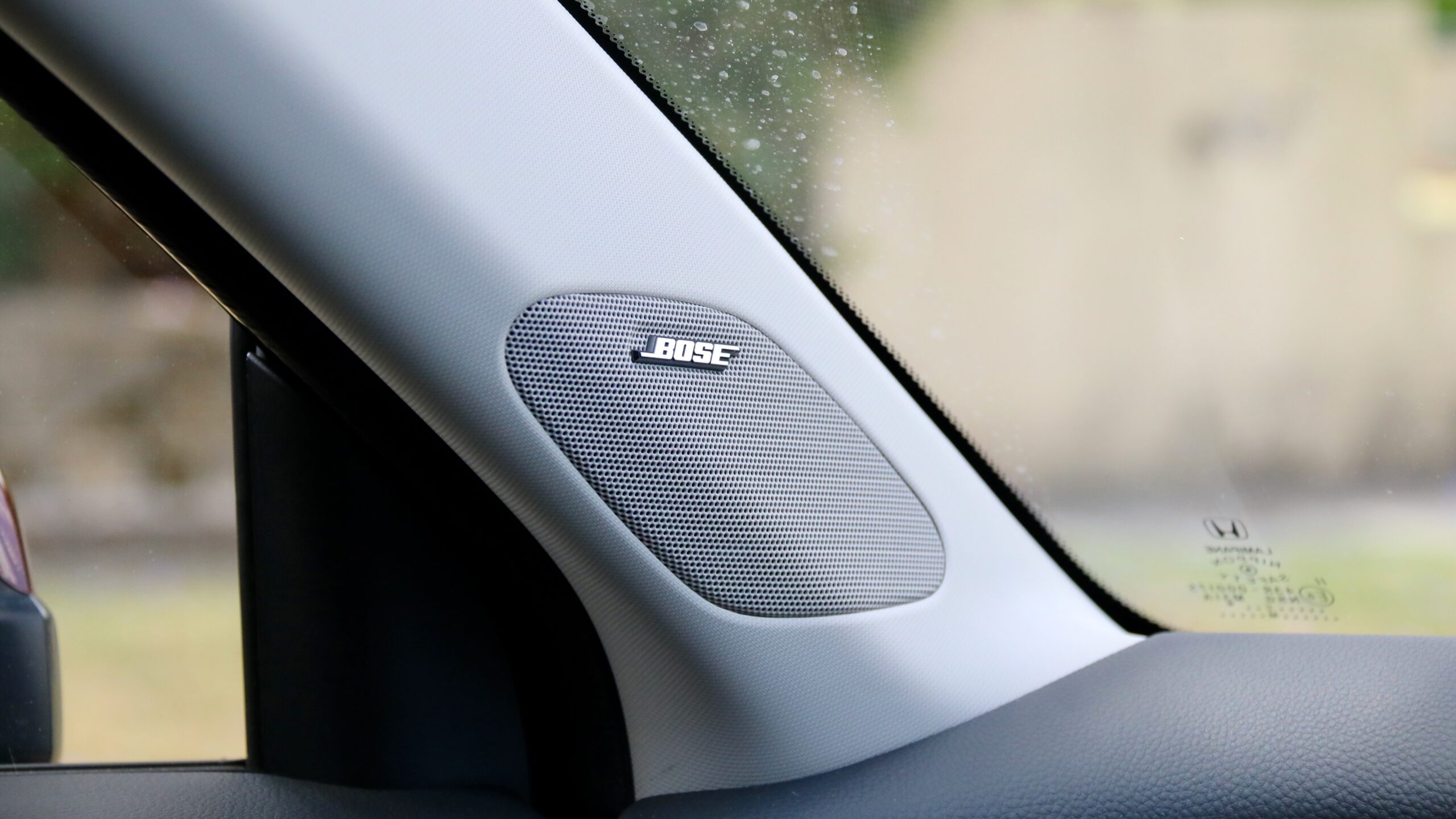
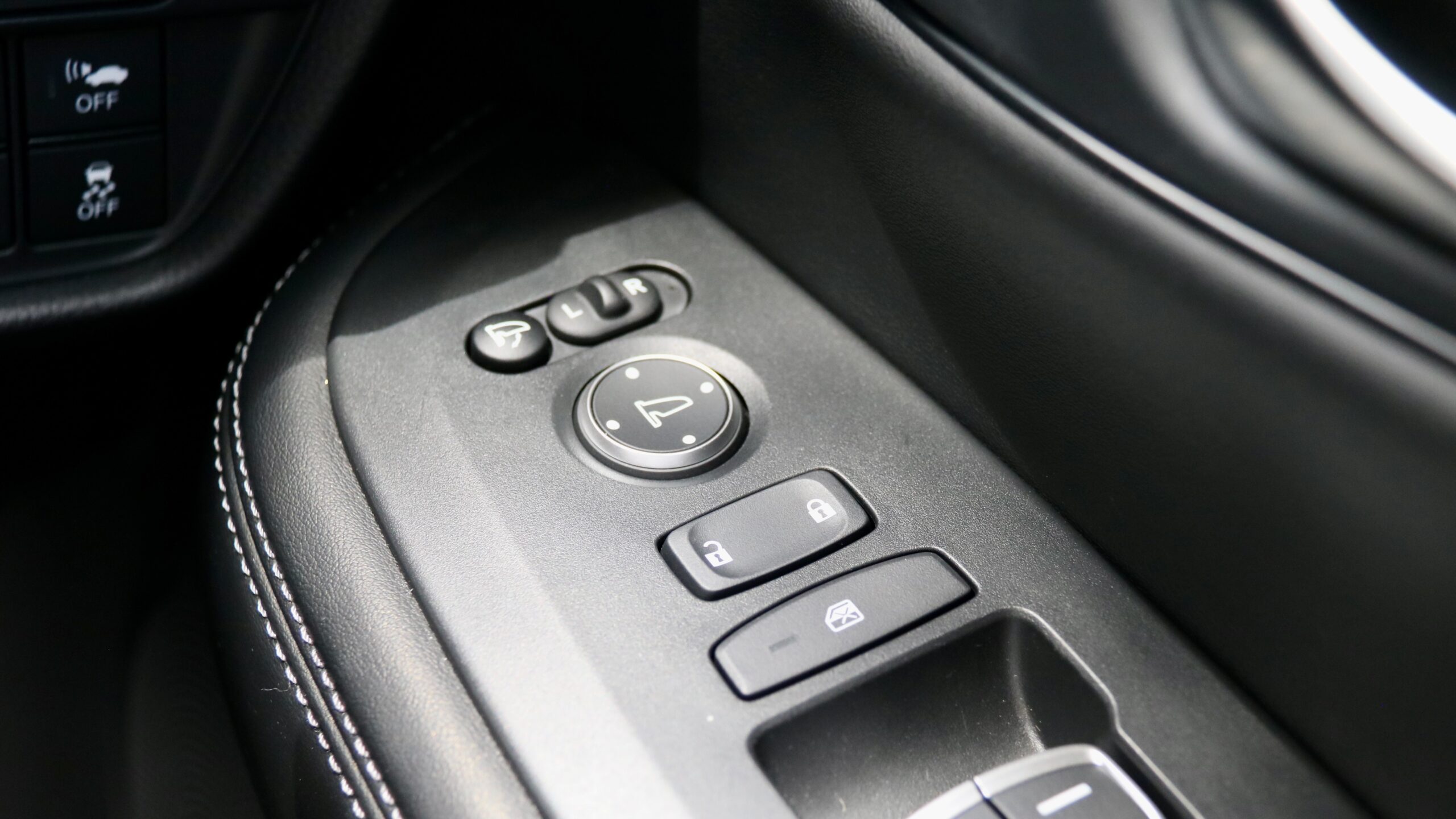
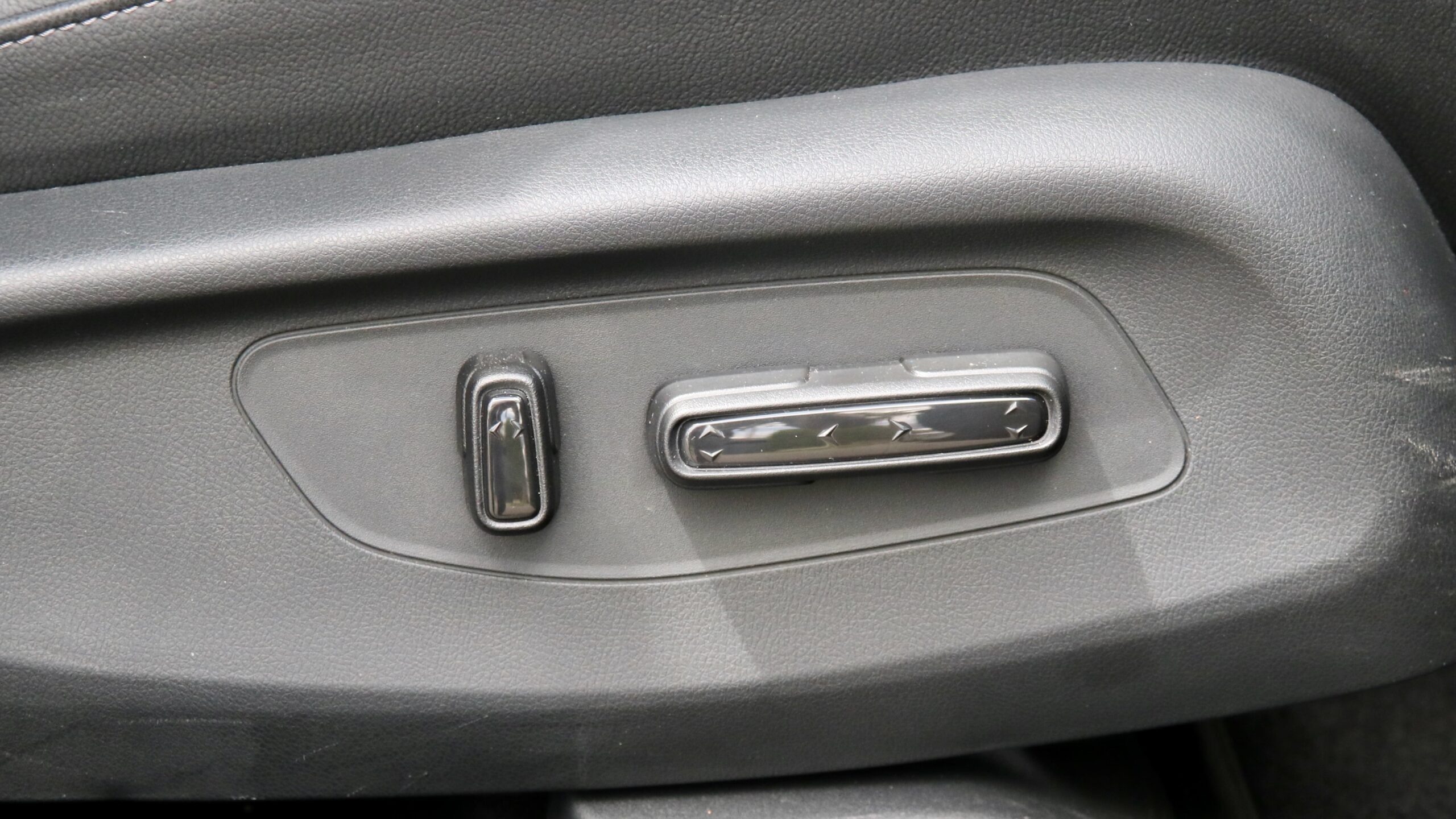
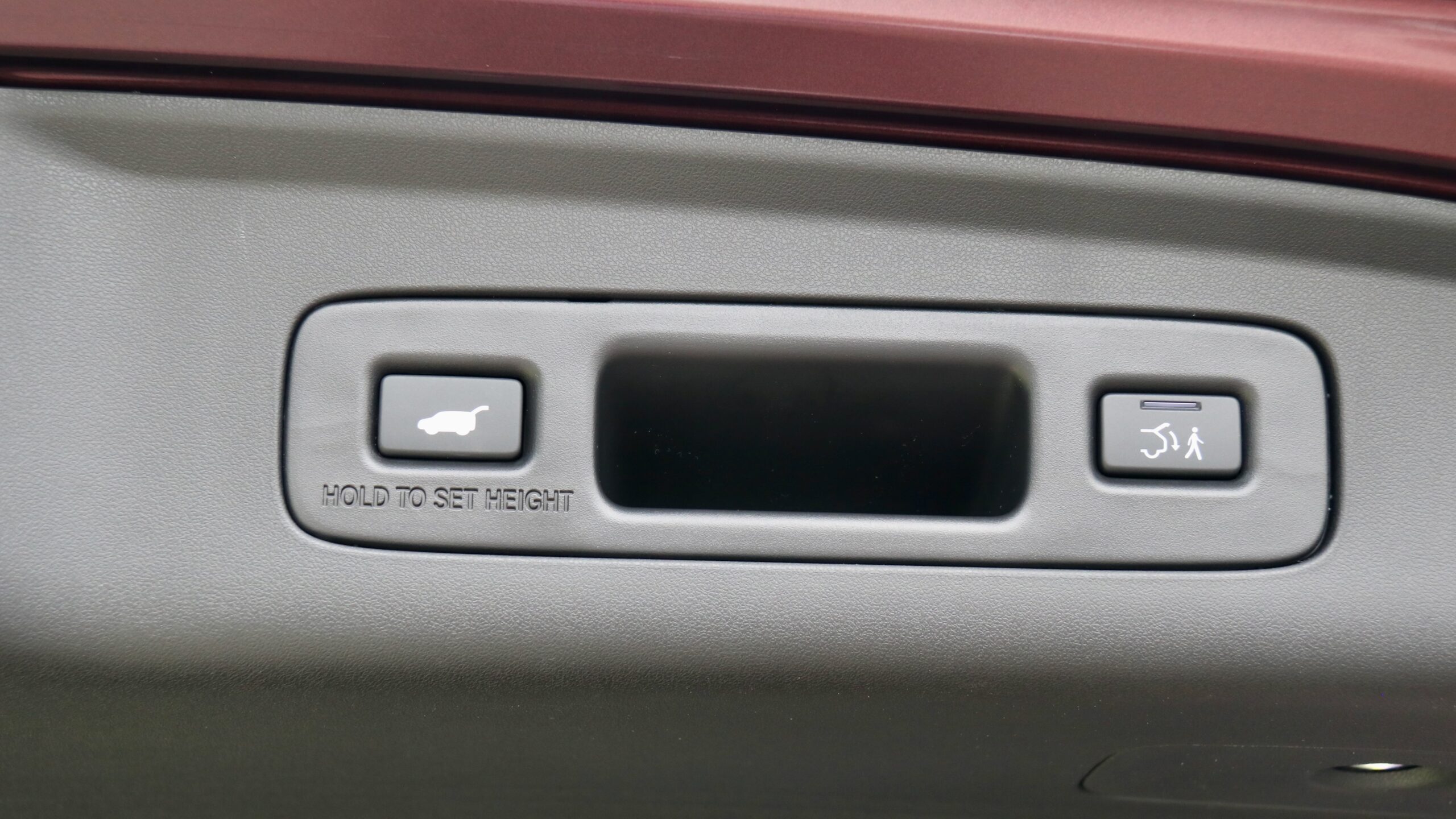
ZR-V e:HEV LX colour range:
- Premium Crystal Garnet Metallic (on our test car)
- Premium Crystal Blue Metallic
- Platinum Grey Metallic
- Platinum White Pearlescent
- Crystal Black Metallic
Black leather upholstery is the only interior option for the ZR-V e:HEV LX in Australia.
There are a number of rivals to the ZR-V from both the small and medium SUV segments in Australia: that’s everything from the Mazda CX-30 to the CX-5, Skoda Karoq, Toyota C-HR, Kia Seltos and Sportage and Volkswagen T-Roc and Tiguan. However, none of those options currently offer a hybrid option and for that reason, we consider the Toyota Corolla Cross Atmos hybrid (around $51,500 drive away) and the Nissan Qashqai Ti e-Power (around $57,000 drive away) to be the ZR-V e:HEV’s closest rivals in drivetrain, size and equipment.
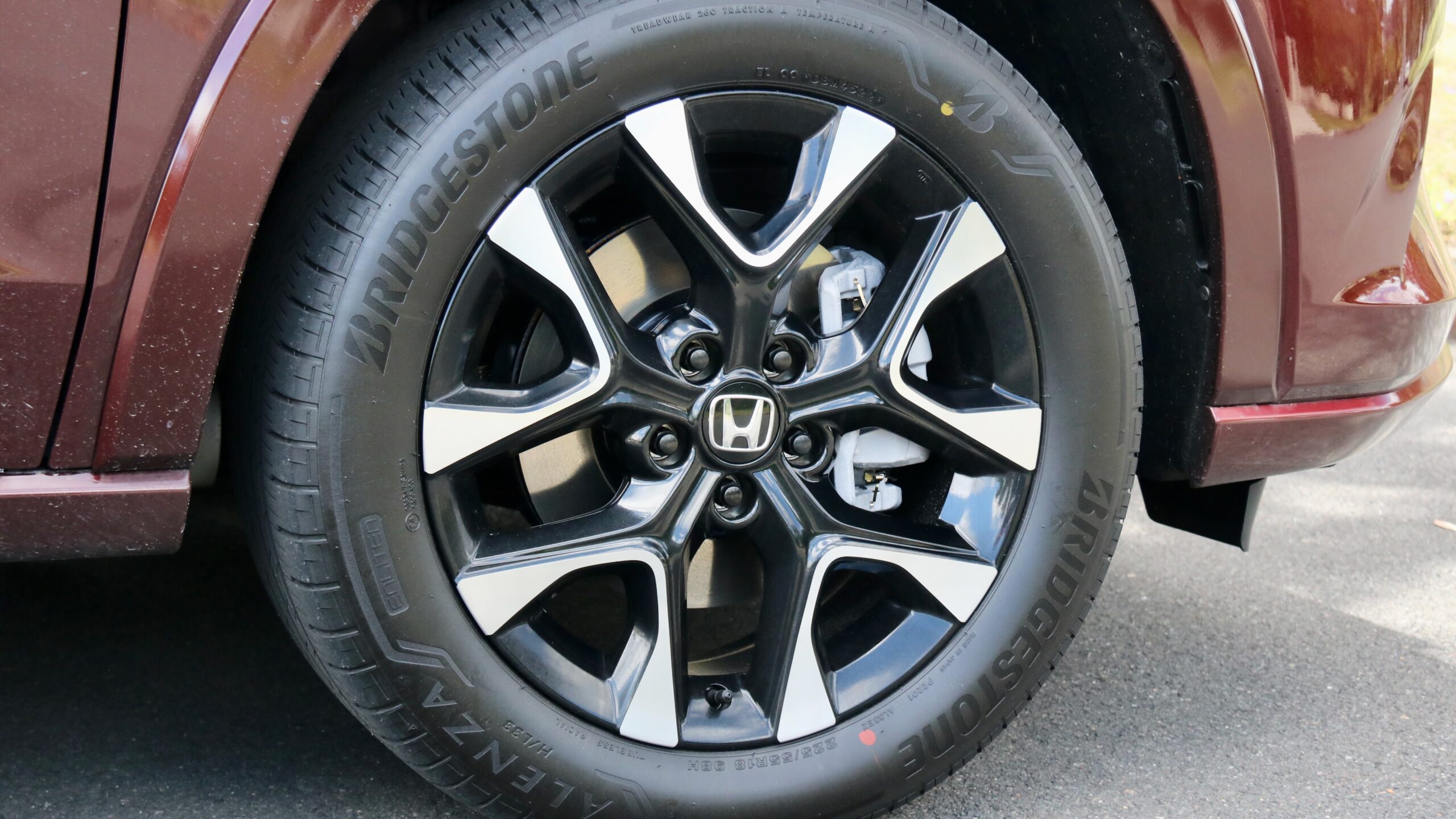
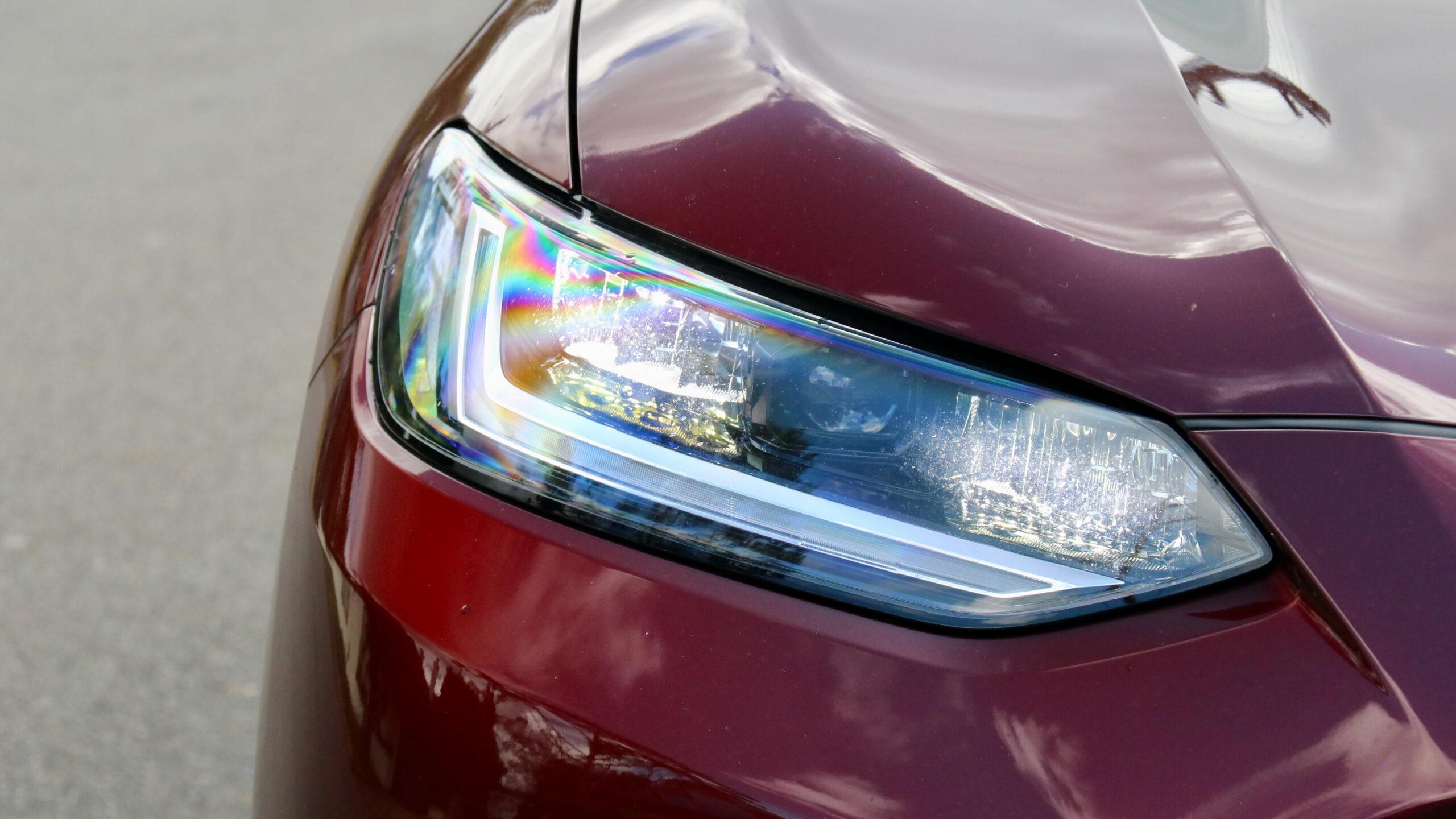
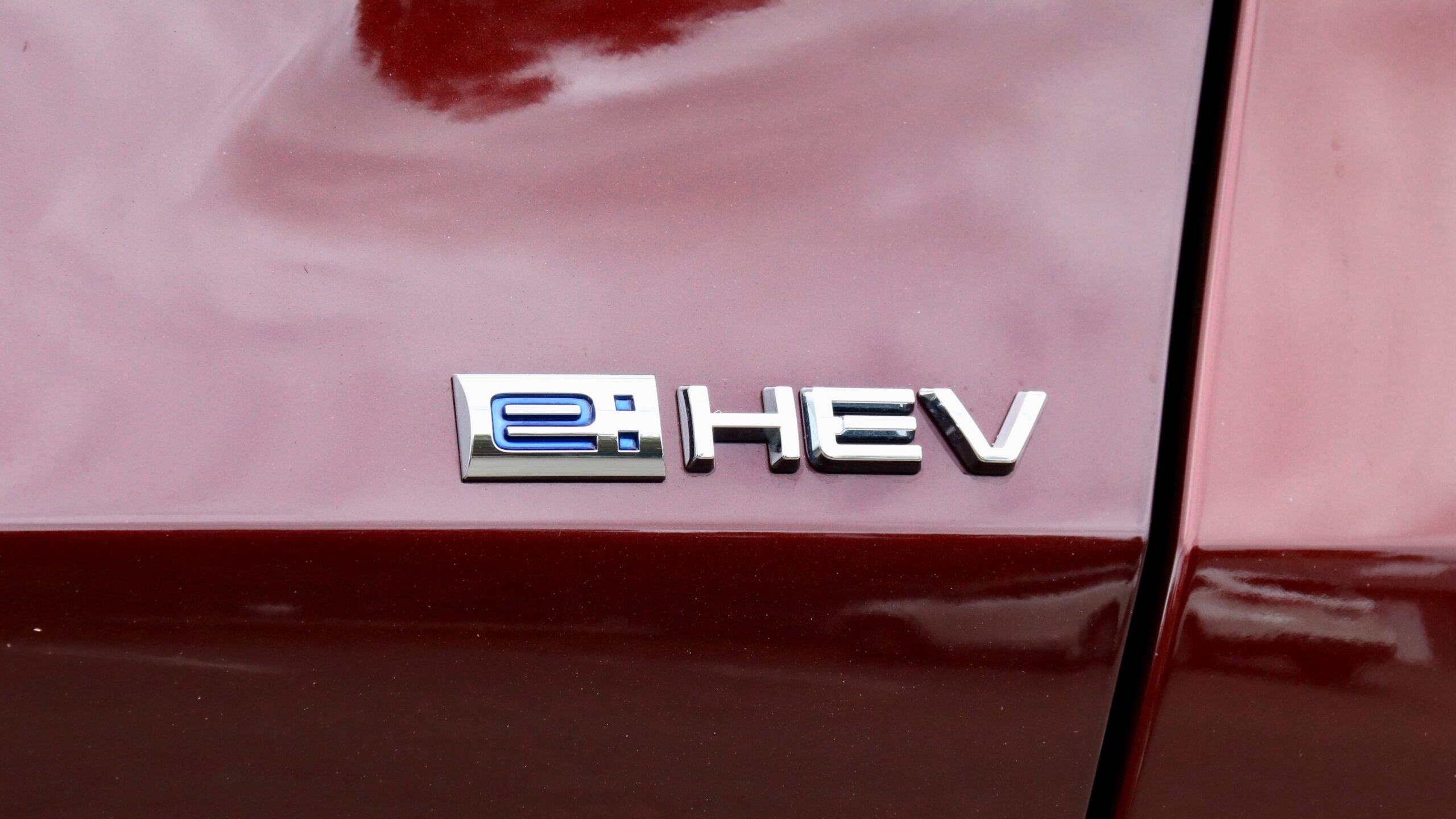
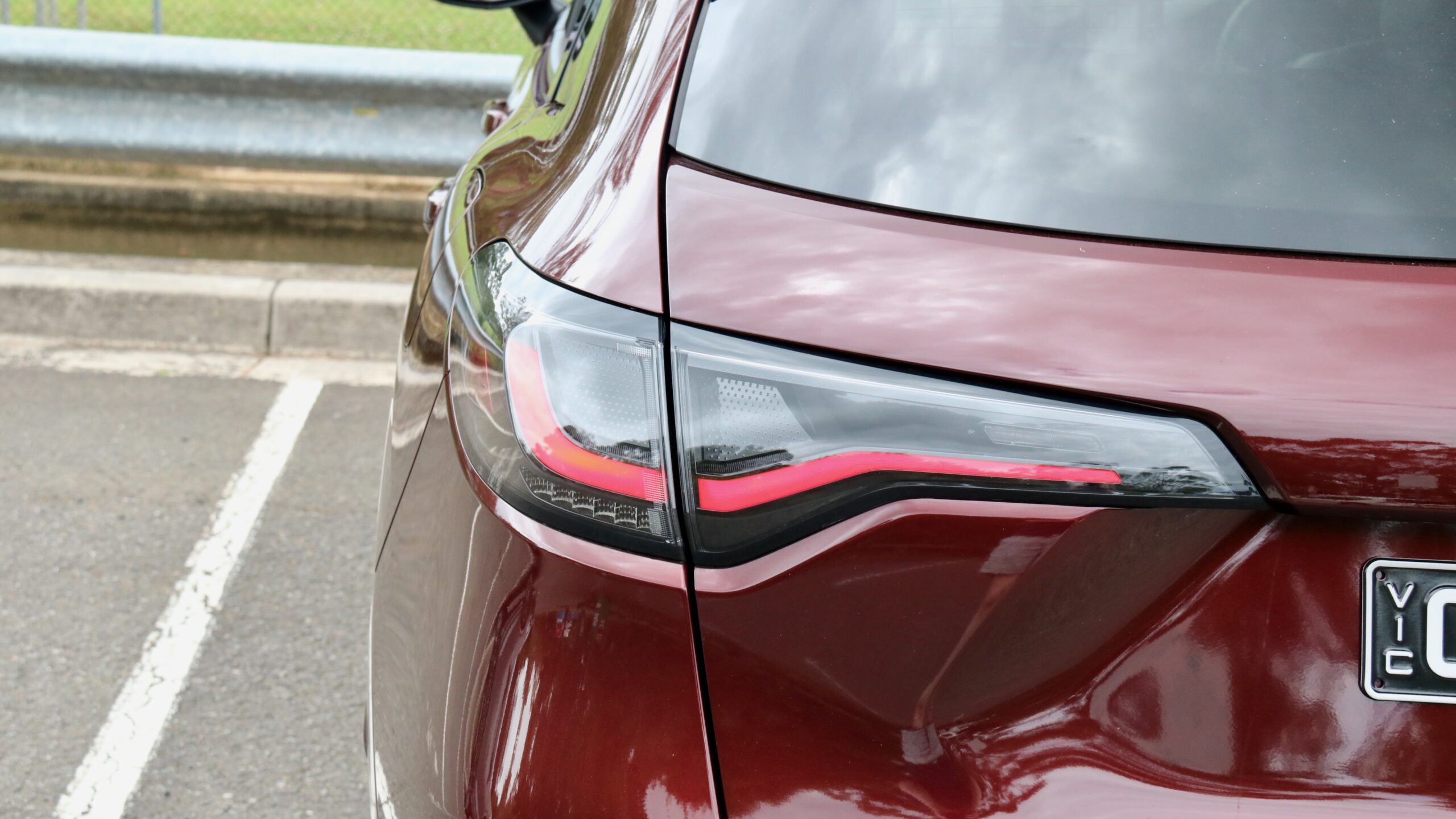
The top-spec ZR-V, Corolla Cross and Qashqai hybrids all feature a long list of standard equipment, including all-LED lighting, large touchscreens with wireless smartphone mirroring, digital instrument clusters and leather upholstery. Against the Qashqai, the ZR-V e:HEV LX adds two extra speakers and four extra airbags, though the Qashqai has larger 19-inch wheels, roof rails, a panoramic glass roof and a heads-up display over the cheaper Honda. Against the cheaper Corolla Cross, the ZR-V e:HEV LX adds more speakers, an electric front passenger seat, more airbags and Matrix adaptive high beam, though the Toyota adds rear auto braking and a larger centre touchscreen.
We think the ZR-V hybrid presents good value for money against its competitors, but its $6,400 premium over the petrol ZR-V VTi LX is steep and it’s unfortunately the only hybrid ZR-V on offer currently. We’d like to see Honda offer more hybrid models lower in the ZR-V range to give more people access to the fuel-sipping drivetrain, and there’s clearly demand for it.
How fuel efficient is the 2023 Honda ZR-V e:HEV LX?
Under the bonnet of the 2023 Honda ZR-V e:HEV LX is the same 2.0-litre Atkinson Cycle four-cylinder dual-motor hybrid drivetrain as the Civic on which it’s based. It makes the same 135kW of power (between 5,000rpm and 6,00rpm) and 315Nm of torque (from 0rpm to 2,000rpm), which makes it the punchiest ZR-V on offer locally. In Australia, all ZR-V models send their power to only the front wheels – all-wheel drive models are available overseas – and the hybrid is mated to an e-CVT transmission with selectable driving modes, including eco and sport.
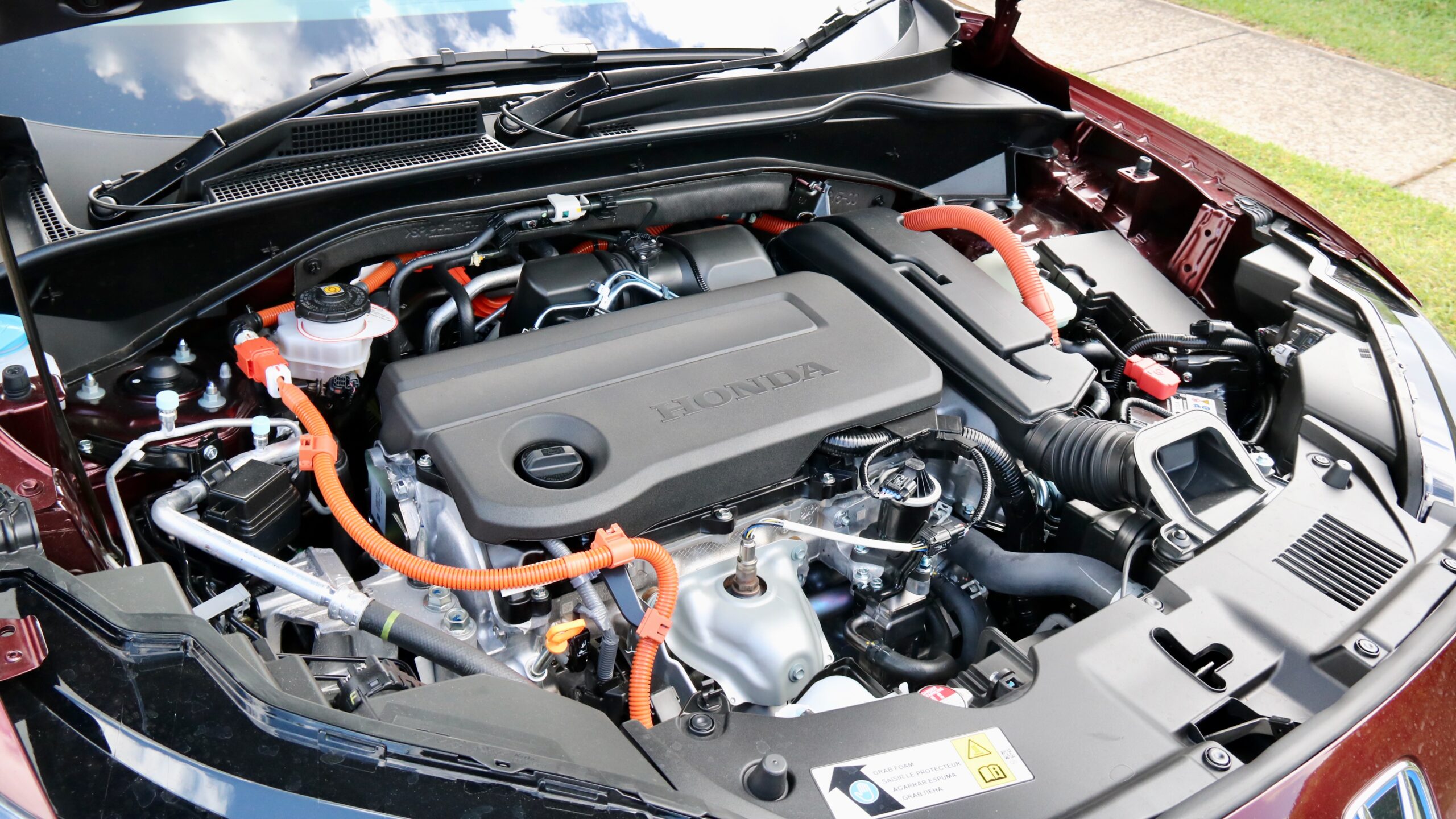
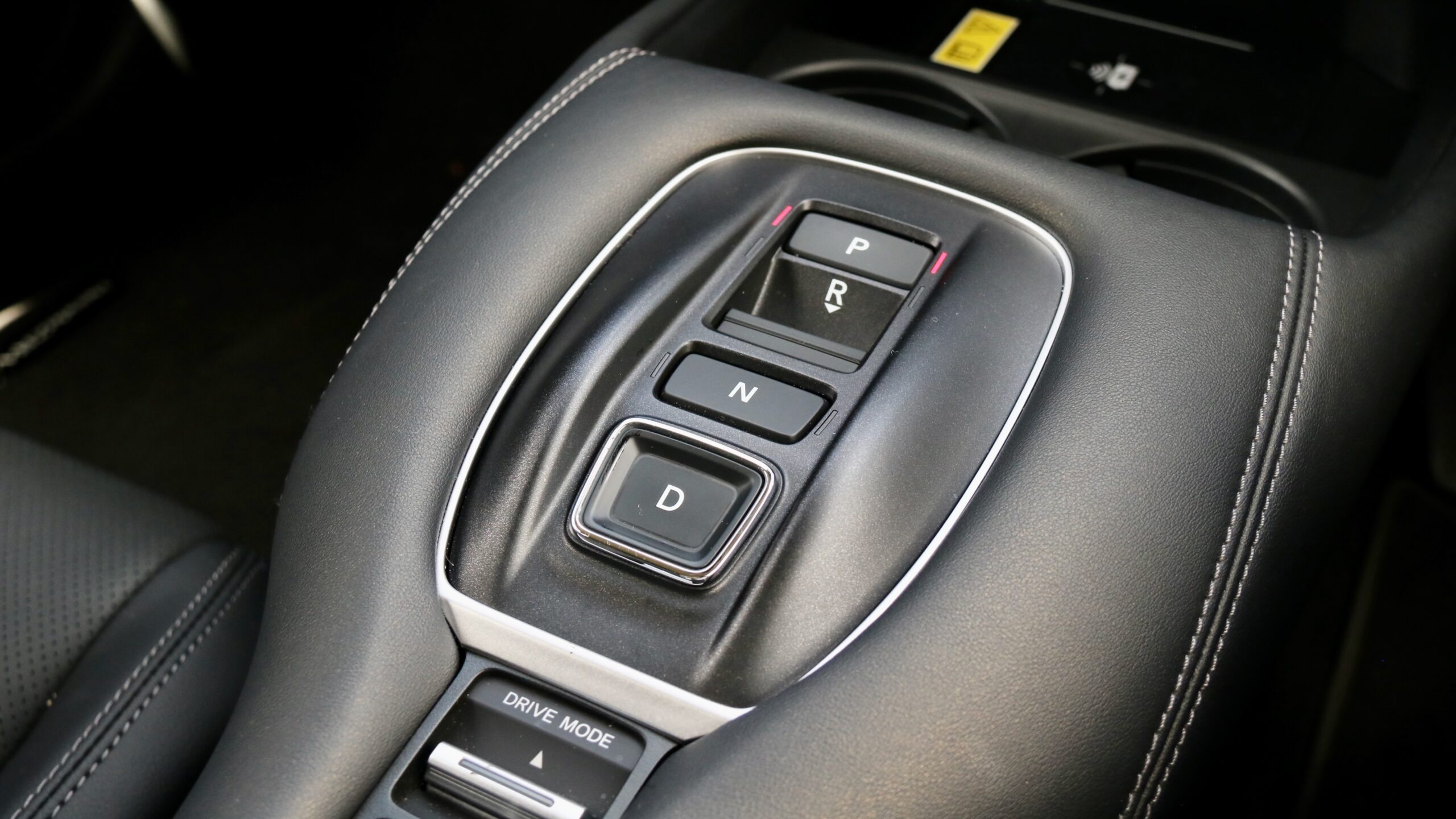
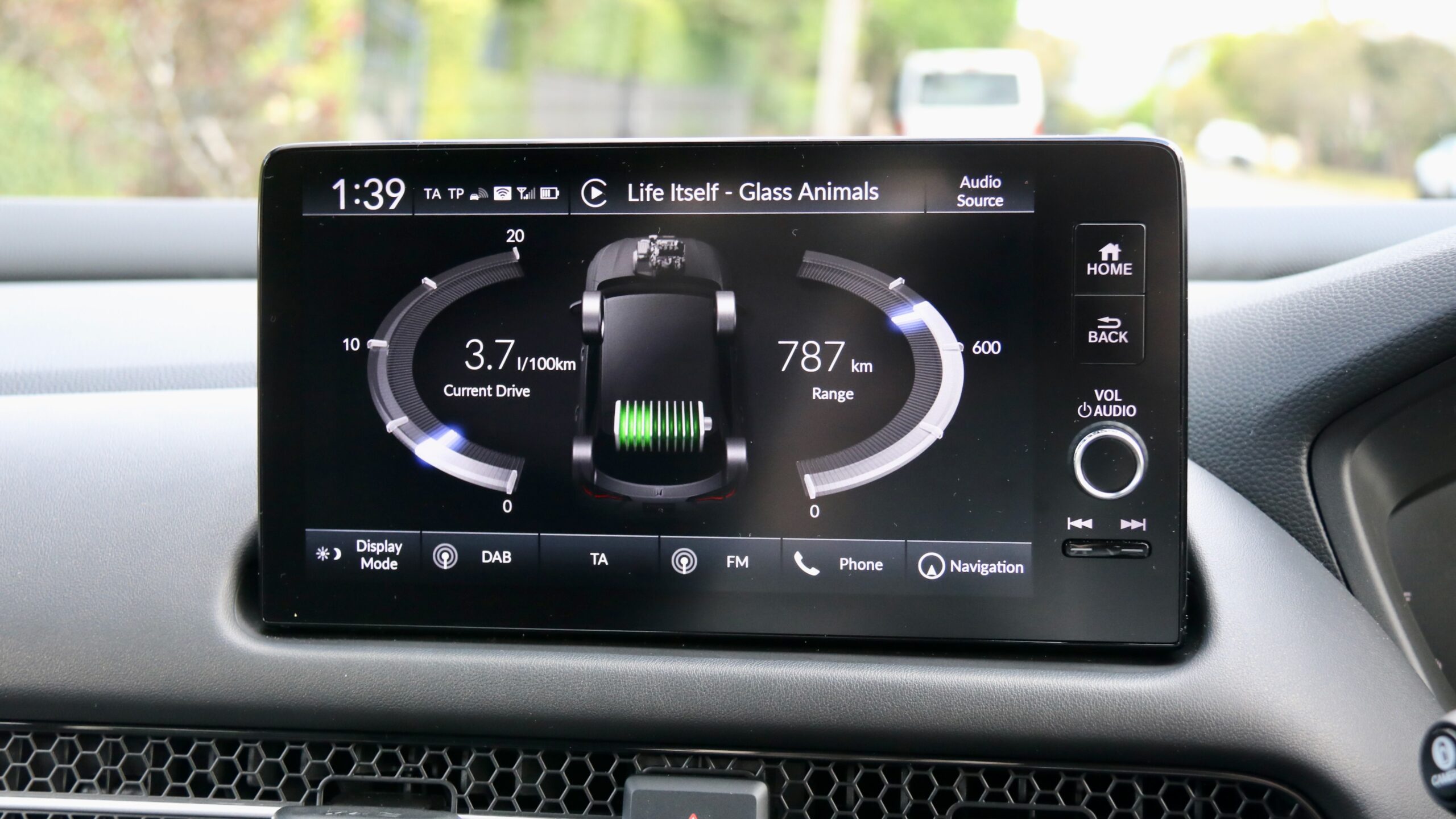
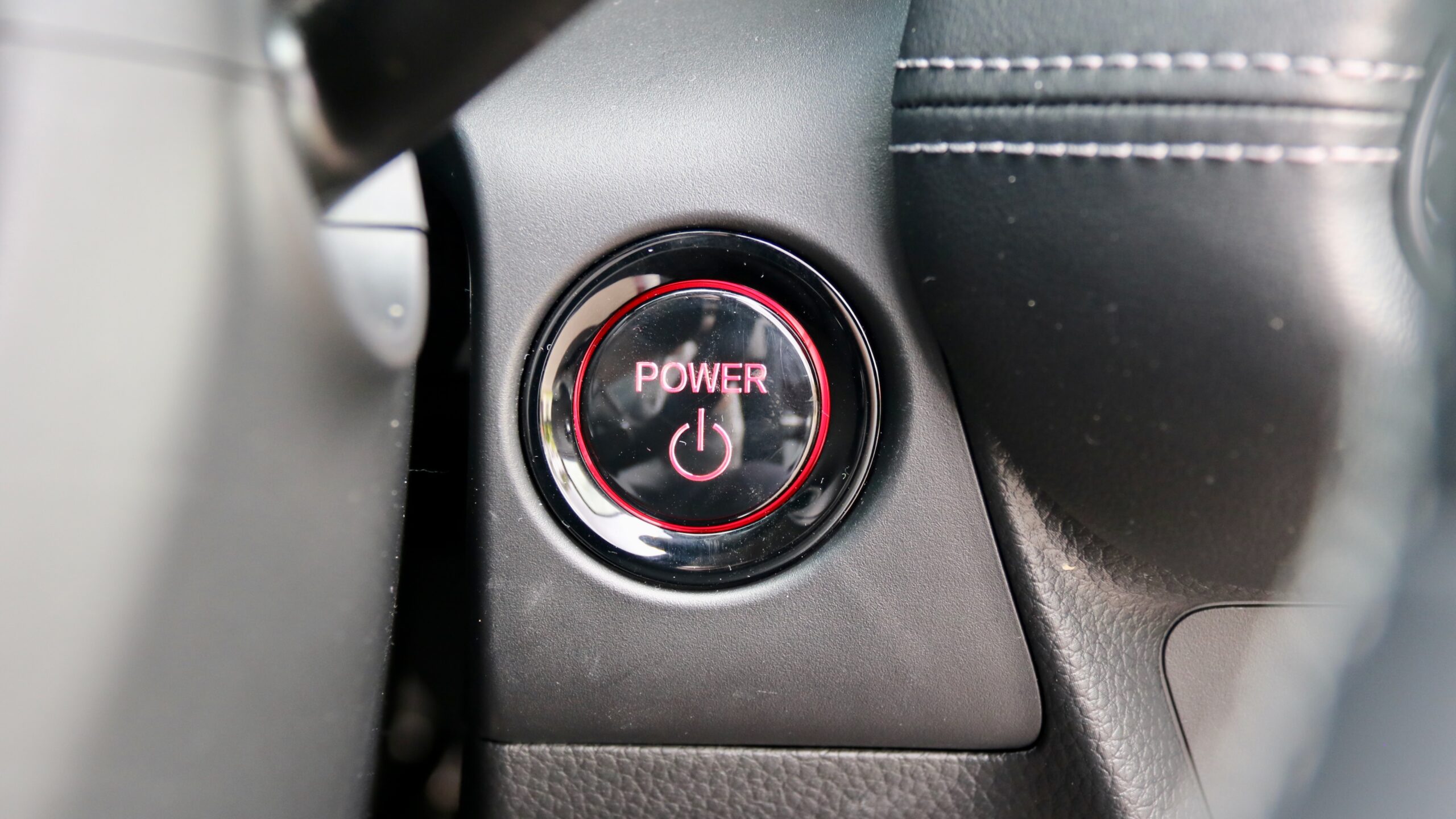
Unlike Nissan’s hybrid system where the engine purely drives the electric motor which then powers the wheels, Honda’s engine can also power the wheels directly and does so mostly at highway speeds. That, according to the brand, makes it more efficient. In reality, the drivetrain is excellent – it’s extremely smooth, relatively quiet and offers a good level of performance. There are paddle shifters to control the regenerative braking – though the system oddly reverts to its middle setting after a while, and there’s no dedicated EV mode either, unlike Toyota hybrids.
The ZR-V hybrid has an electronically controlled CVT automatic transmission, like the Corolla Cross. That doesn’t sound amazing, but in reality, it’s great. While you can sometimes get that typical CVT-like drone we’ve become used to with hybrids, when you’re punting it harder, the stepped ratios activate and it sounds remarkably like a regular torque converter automatic transmission. It’s fabulous – if only the transmission select buttons were as good.
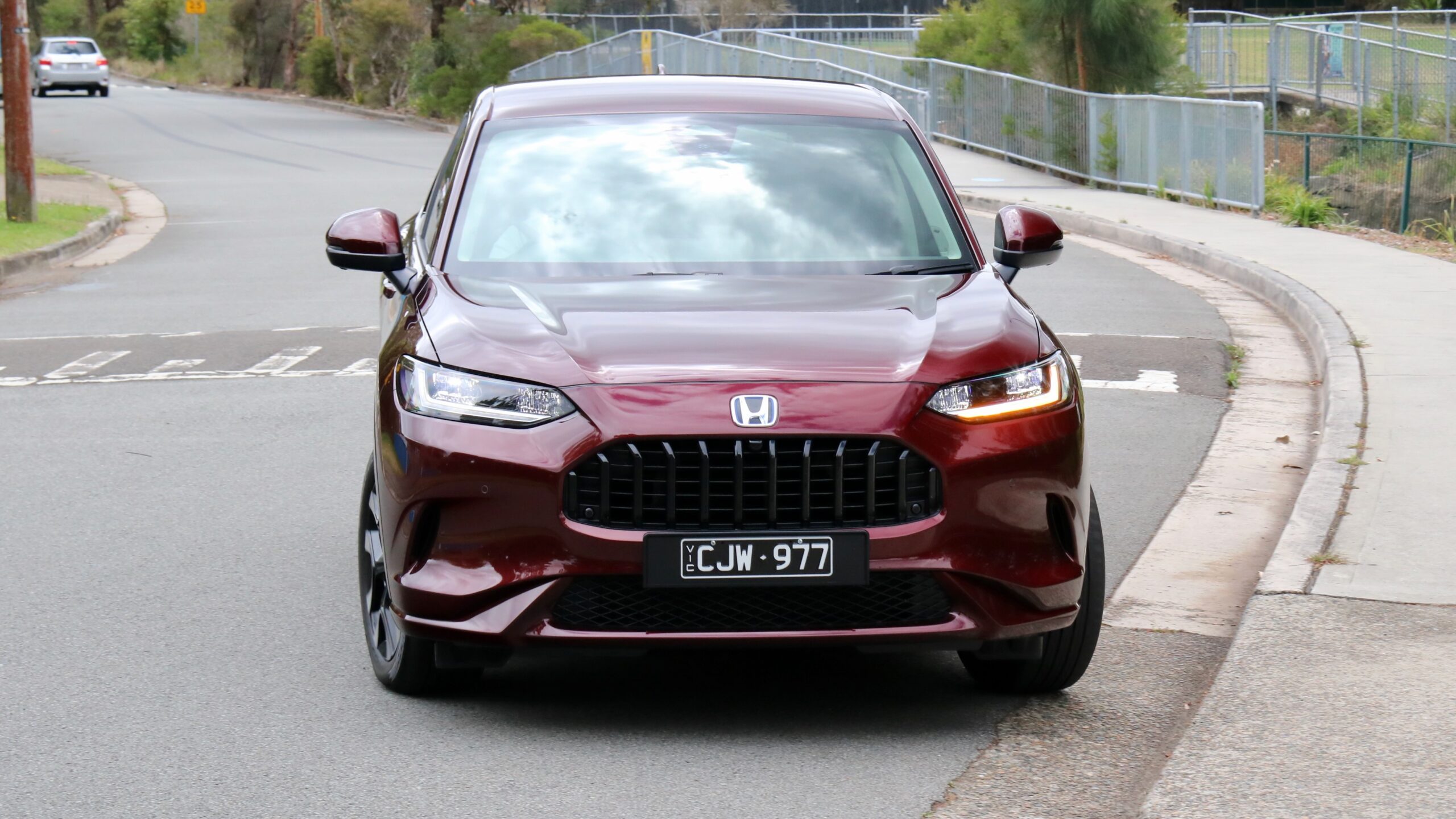
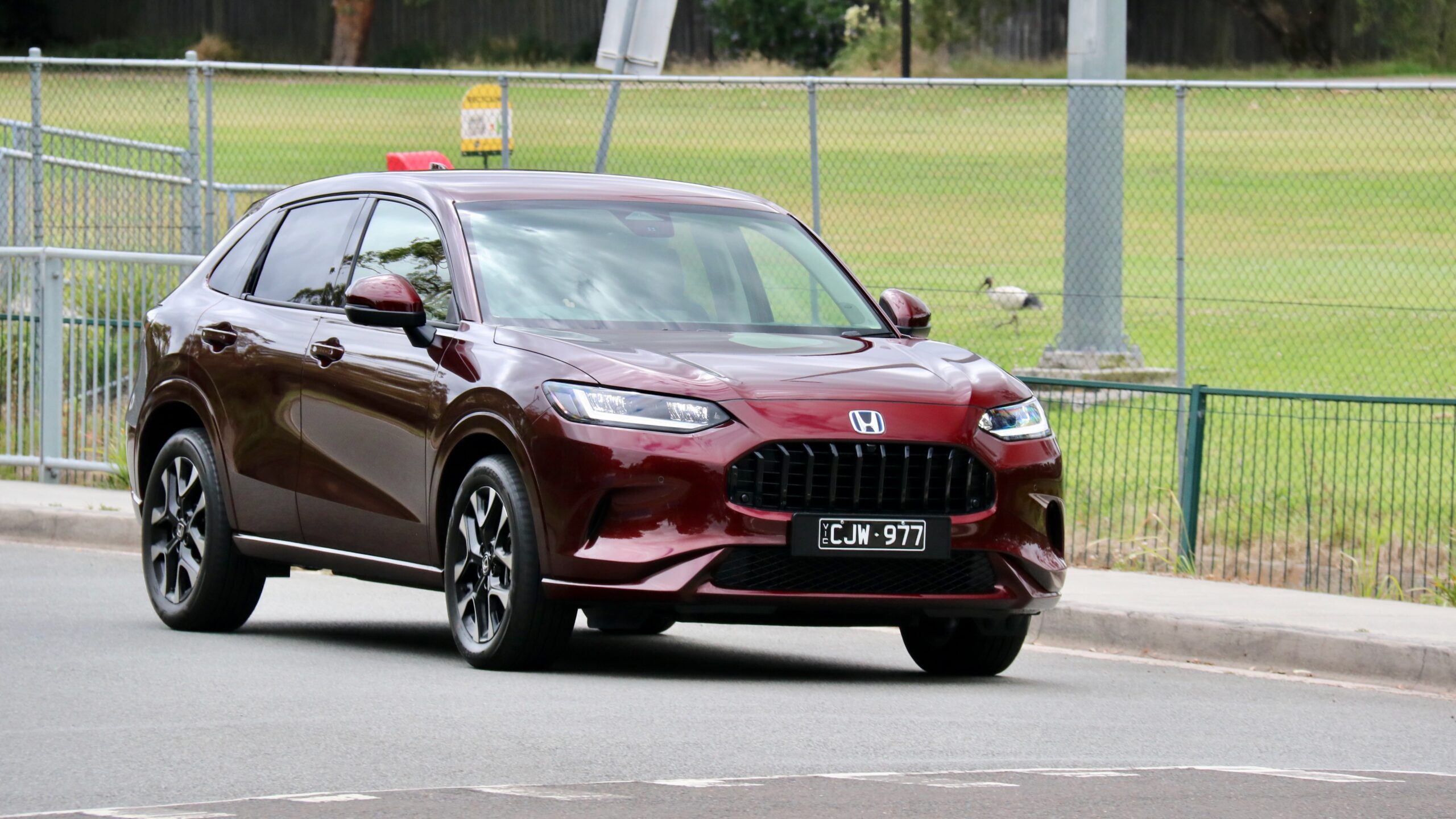
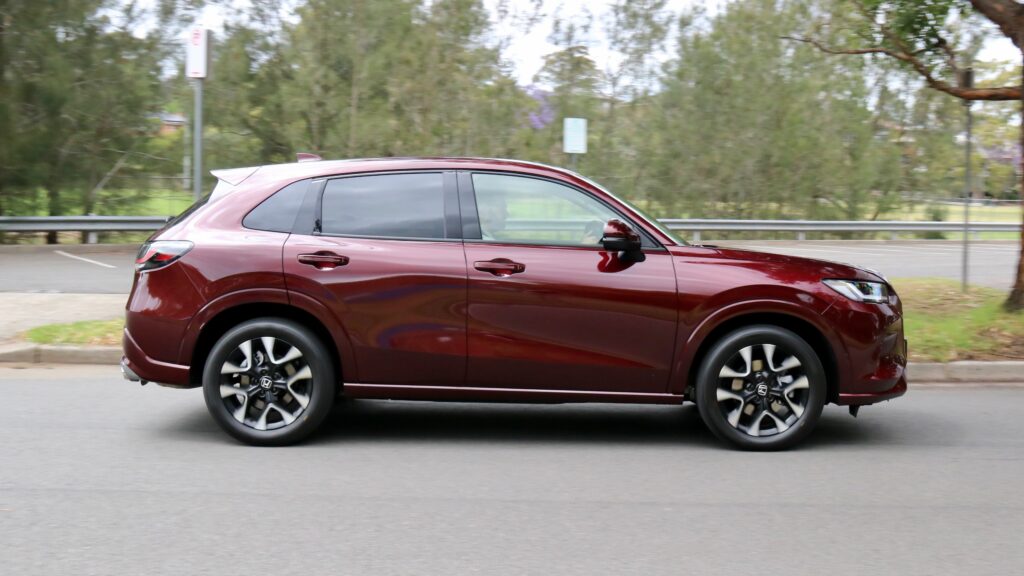
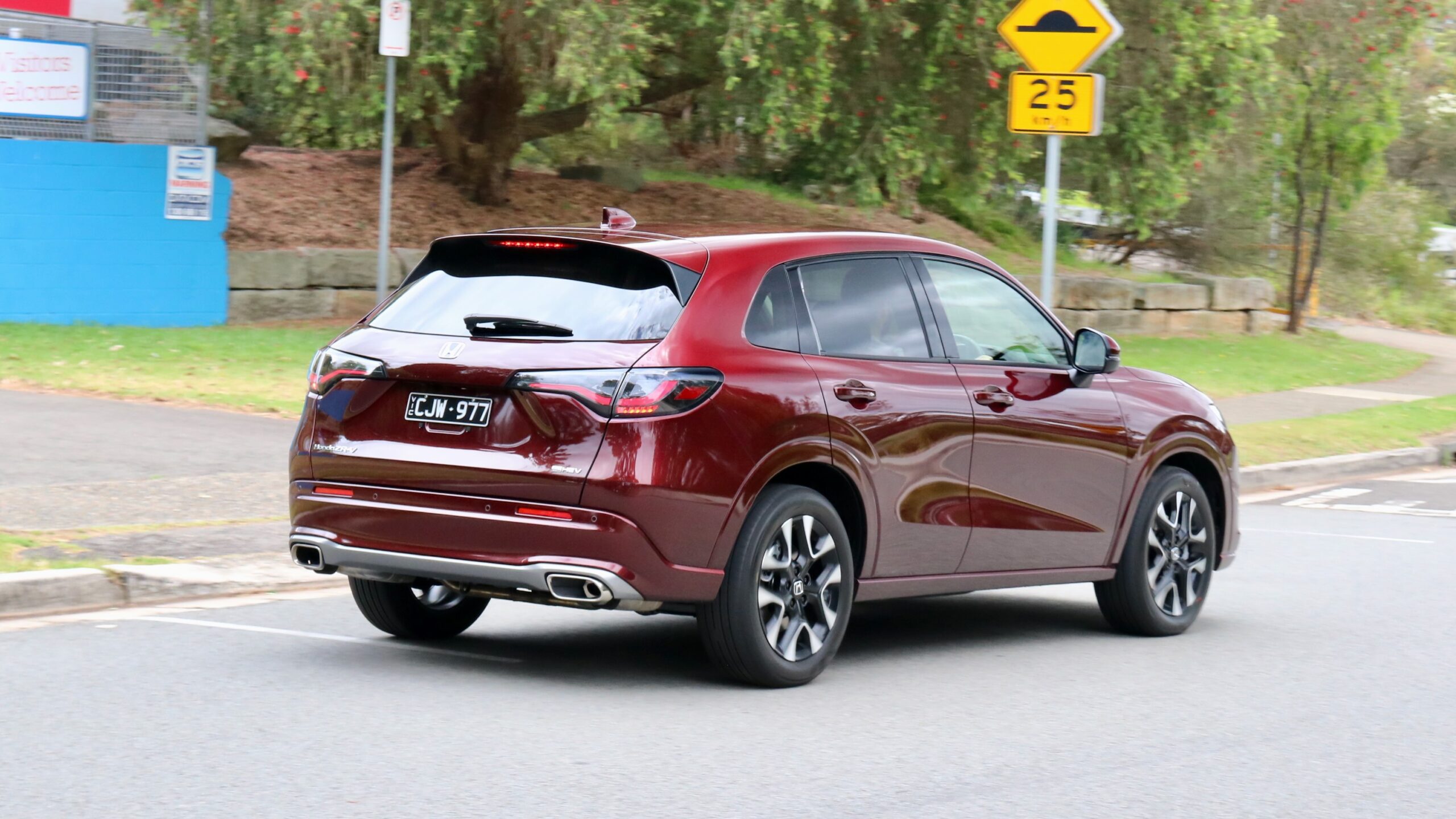
Honda claims that the ZR-V e:HEV LX will use 5.0L/100km of fuel on the combined cycle with claimed CO2 emissions of 114g/km – versus 4.3L/100km for the Corolla Cross and 5.2L/100km for the Qashqai – but we found that figure easy to achieve and even bettered it recording in mixed driving of just 4.7L/100km. Helping its running costs further are that it can run on 91RON regular unleaded fuel and that it has a large 57-litre fuel tank for good range.
What is the 2023 Honda ZR-V e:HEV LX like to drive?
Based on the same platform as the dynamically capable Civic – and only 8mm longer overall at 4,568mm – the 2023 Honda ZR-V e:HEV LX is an overall pleasing and relatively dynamic car to drive that will fit perfectly well with its target market. While the ZR-V’s main rivals all offer a pleasing ride and handling balance as well, we think the ZR-V offers possibly the best balance thanks to its compliant ride quality, sharp handling with quick steering and strong brake pedal feel that can be initially a bit too sharp. Importantly for those seeking comfort, the ZR-V’s multi-link rear suspension set up soaks up bumps better than the HR-V and its less sophisticated torsion beam rear end – though the hybrid definitely feels a touch heavier than its petrol siblings as it weighs more (1,555kg versus 1,439kg tare).
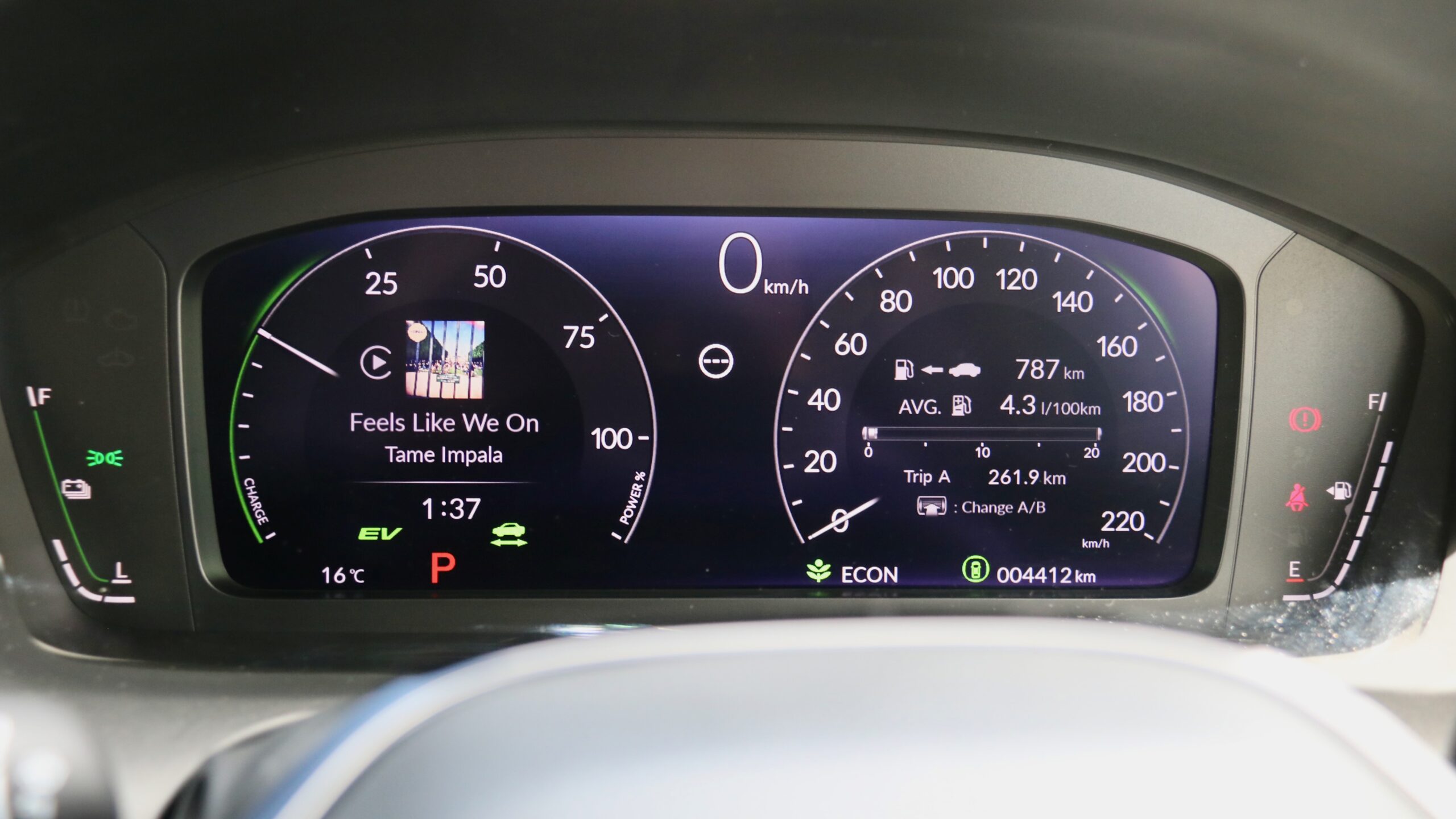
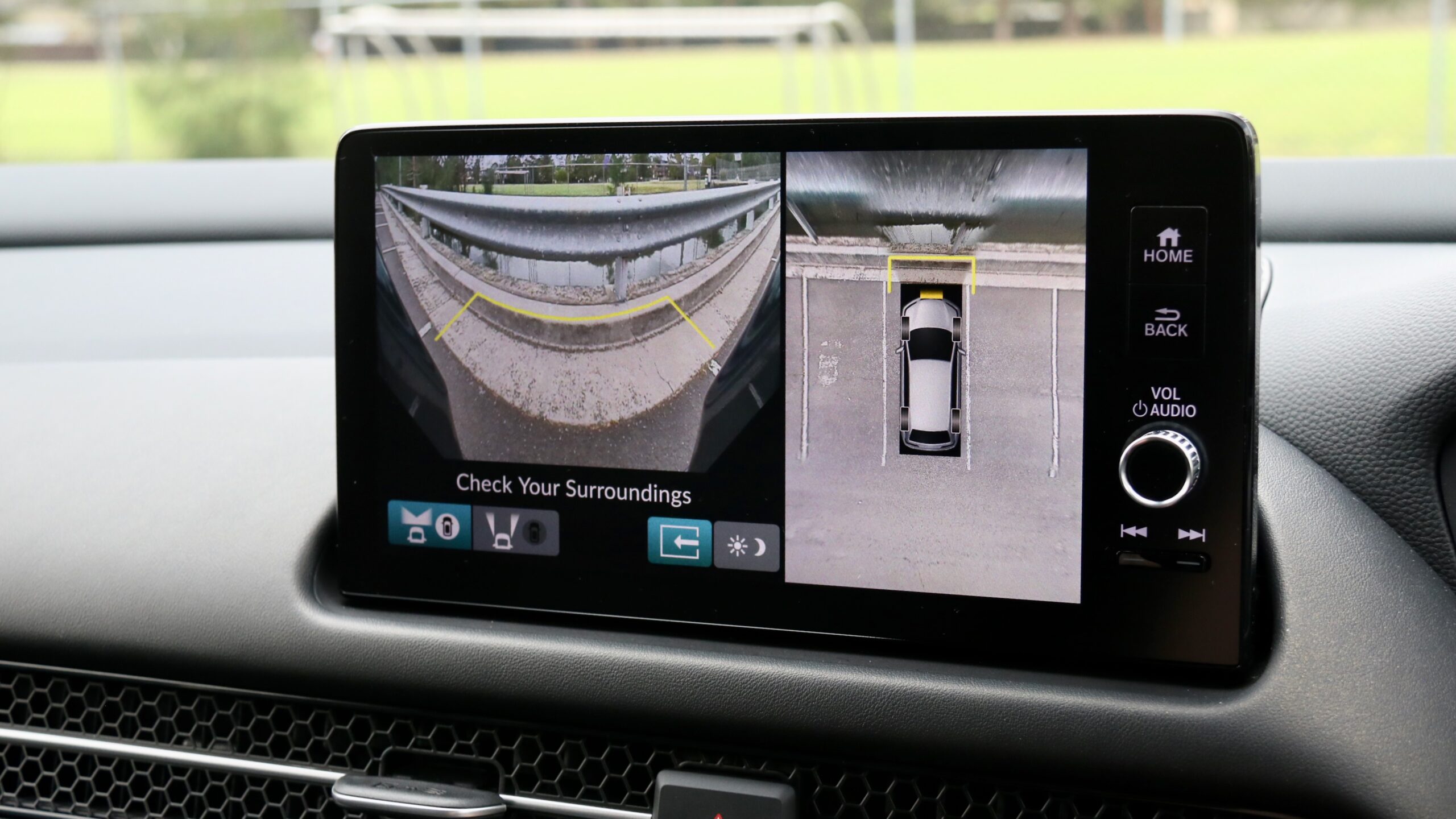
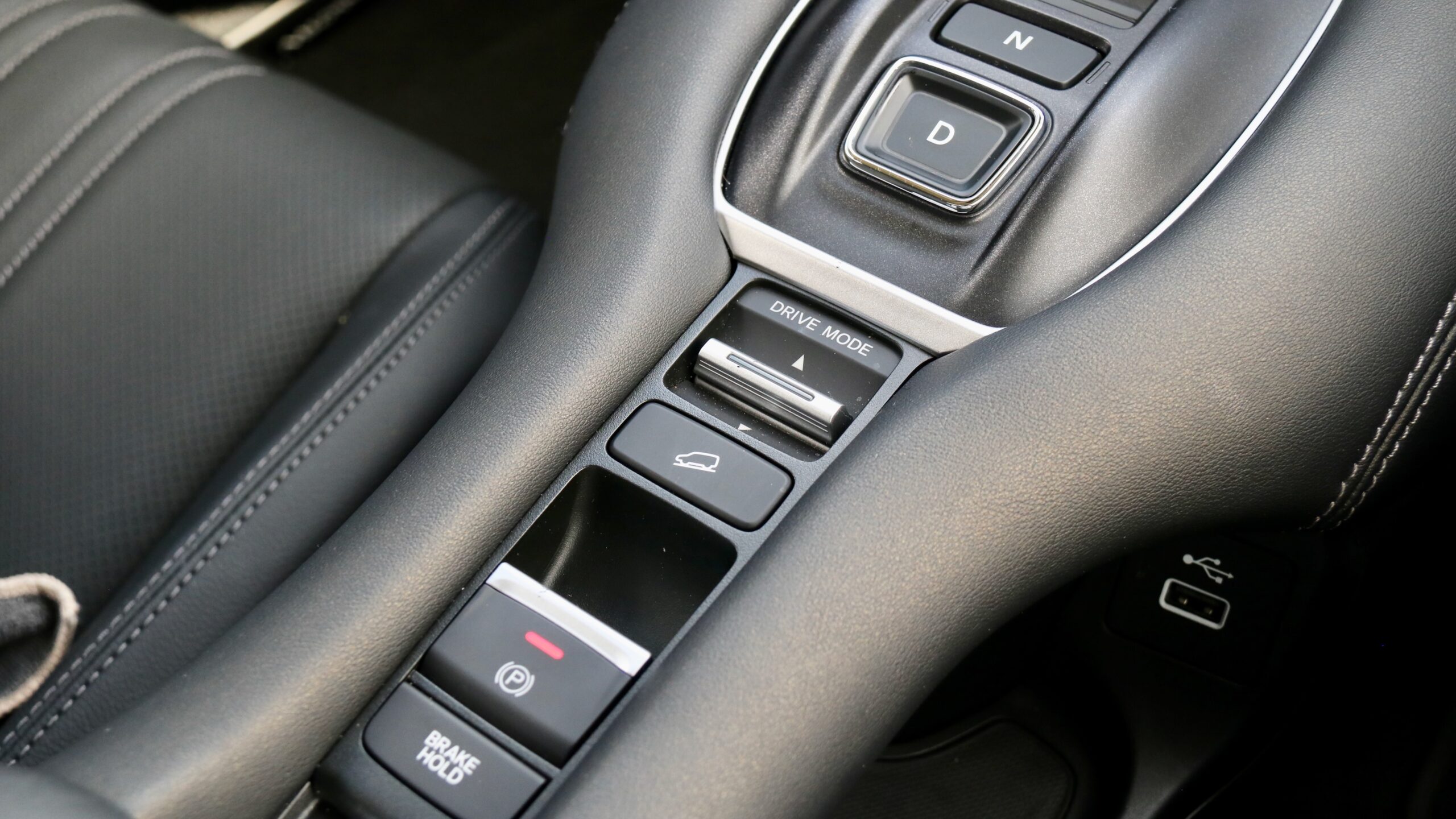
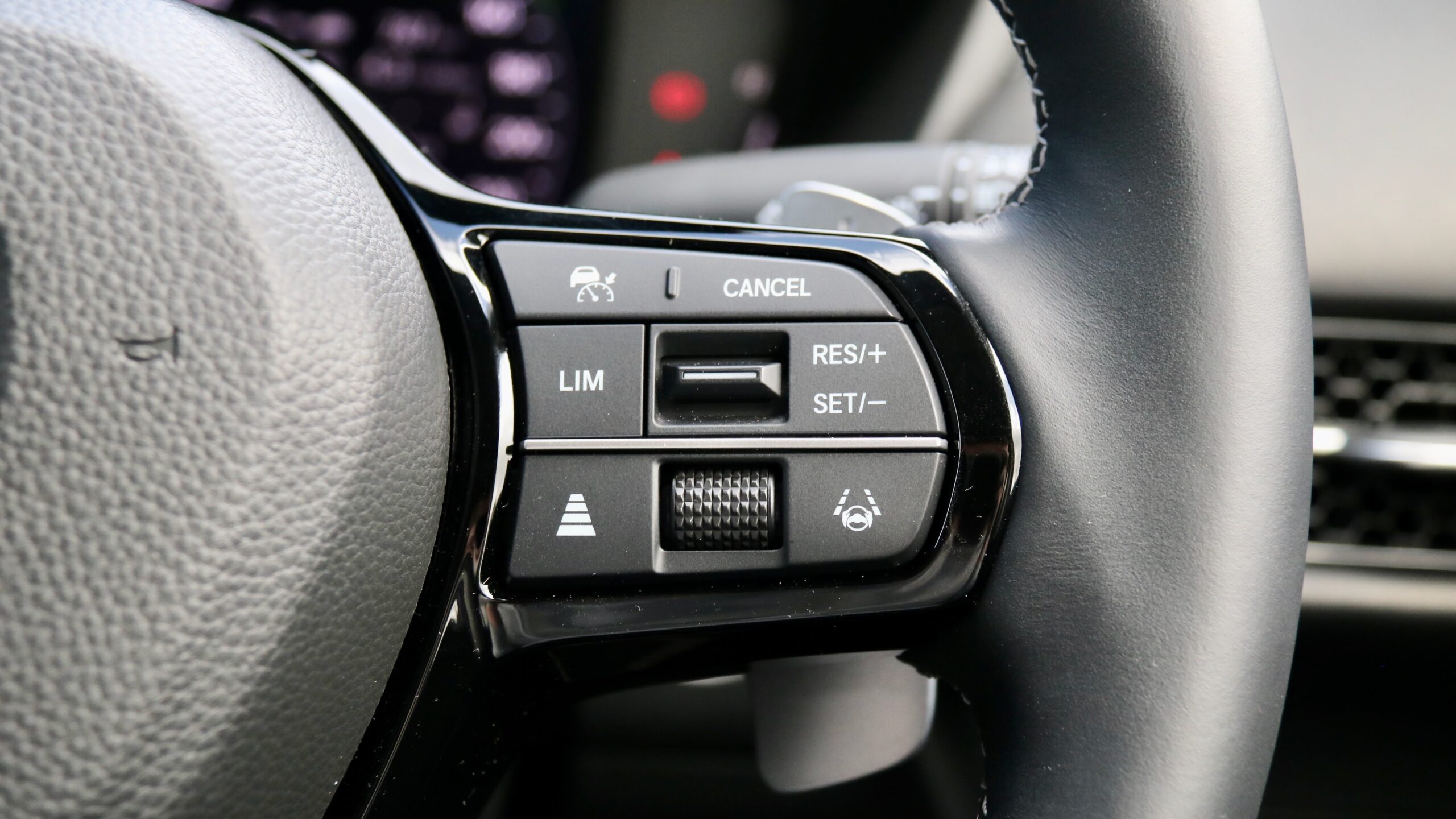
Elsewhere in the ZR-V’s driving experience is positive as well – road noise levels are relatively subdued for the segment, while the ZR-V’s active safety equipment is quite good as well. In our week with it, we didn’t have any issues with how well tuned it is – the Matrix adaptive high beam is surprisingly keen to activate, while we love the lane display on the driver’s screen when the cruise control is active.
What is the interior of the 2023 Honda ZR-V e:HEV LX like?
We’ve been quite impressed with the Honda cabins that we’ve tested recently thanks to their good quality, slick technological integration and strong practicality and the ZR-V’s cabin takes things to a higher level. Regardless of model chosen, there are plenty of soft touch materials around including the door tops (including the rear) and dashboard, while the centre console is covered in a soft stitched touch faux leather material. The leather used on the steering wheel feels great, while the seat material is comfortable. The switchgear used – such as the climate controls – have a nice tactility as well and overall, we think the ZR-V’s cabin is more than a match for the high quality Qashqai, and offers a richer mix of cabin materials than the Corolla Cross.
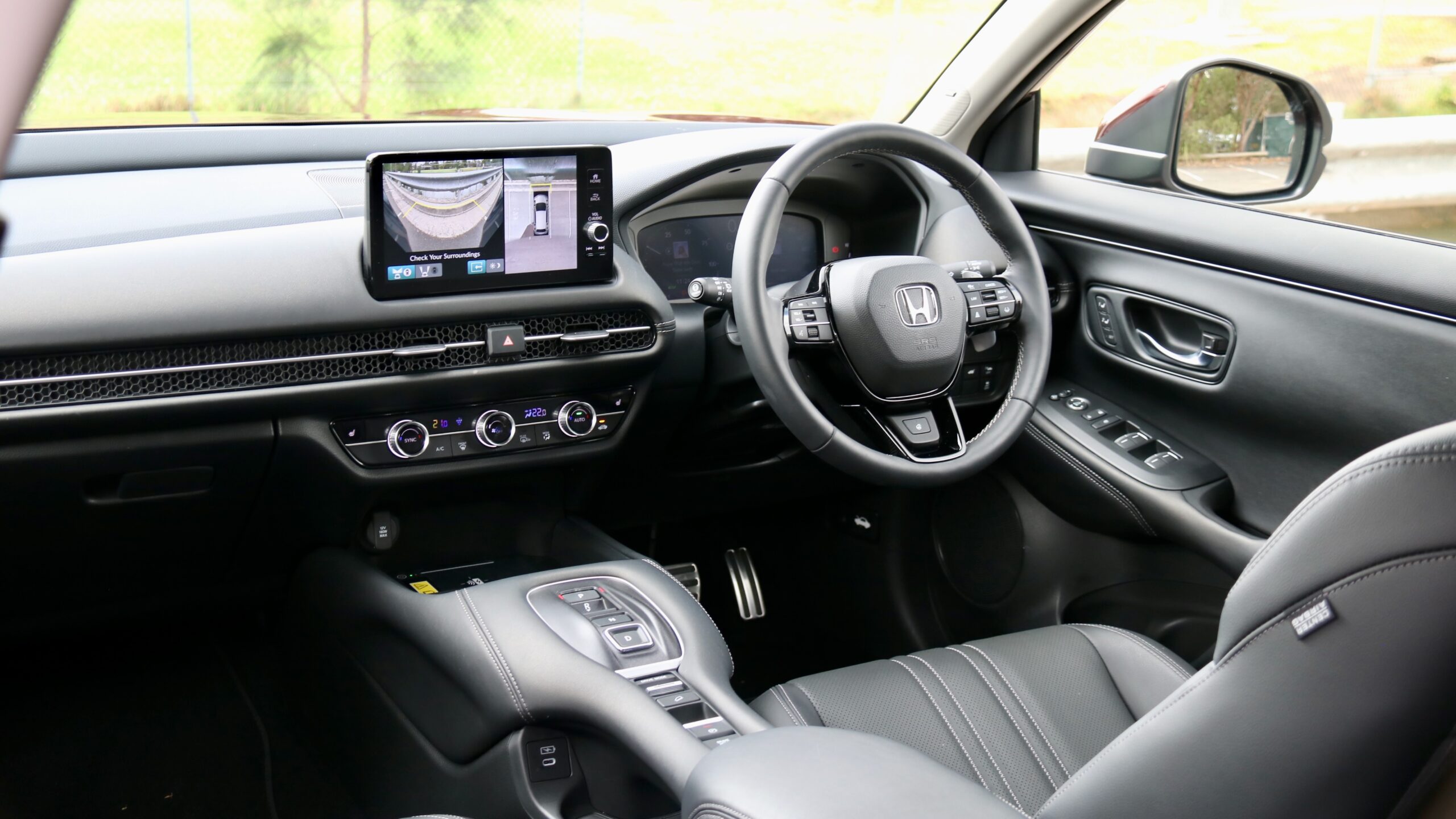
Centre of the ZR-V’s cabin is a 9.0-inch touchscreen with satellite navigation, wireless Apple CarPlay and Android Auto, digital radio and live services for over-the-air updates and remote app functionality. The same system is used in other Honda models and it’s generally pretty good with a quick reaction to touch, easy to use menus and bright colouring. We wish the screen quality was a touch better, but the 12-speaker Bose sound system is pretty punchy.
Storage inside the ZR-V’s cabin is great with a big box underneath the centre console, two trays around the centre console, two reasonable cup holders and a big glovebox – though average door bins.
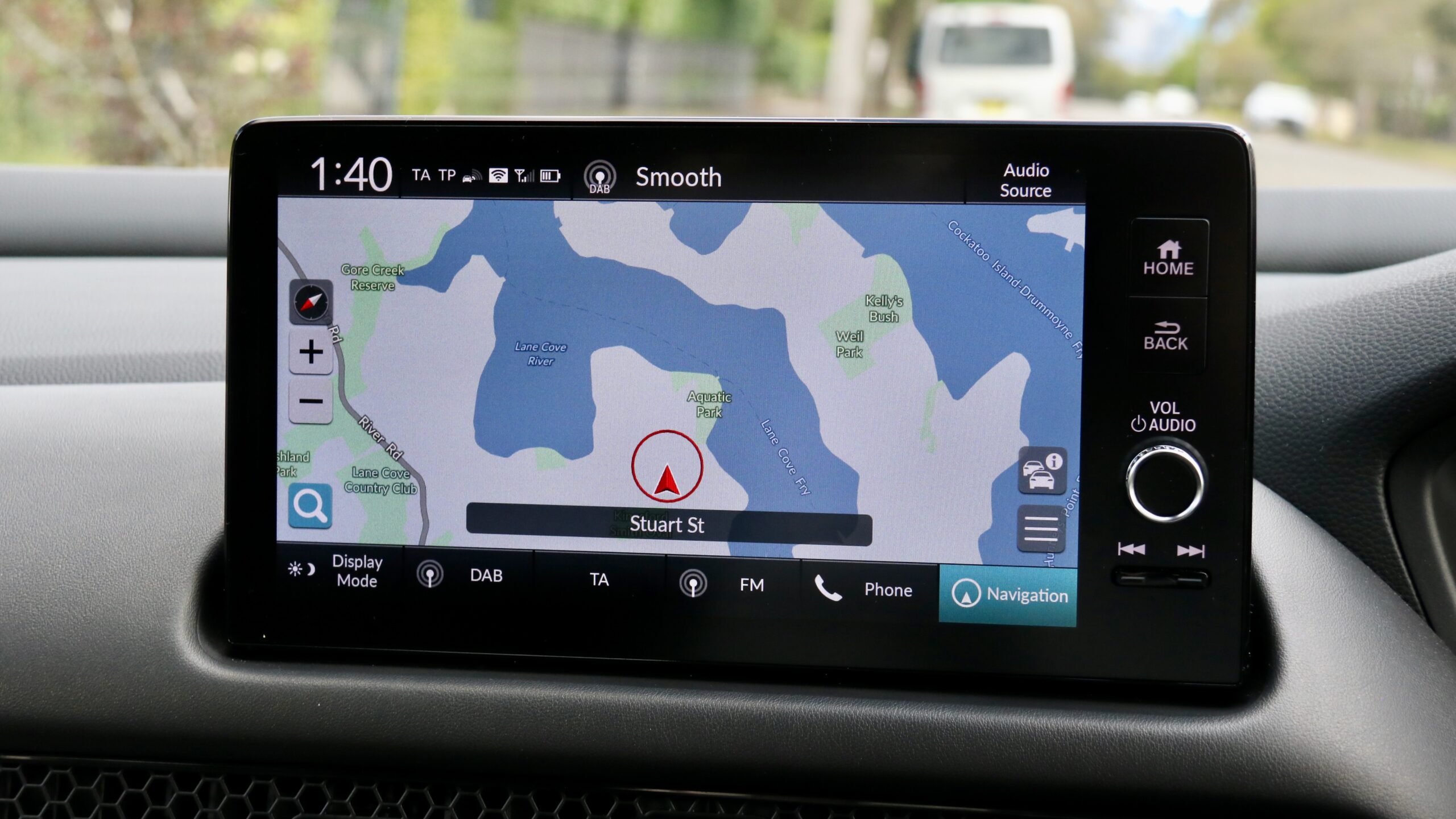
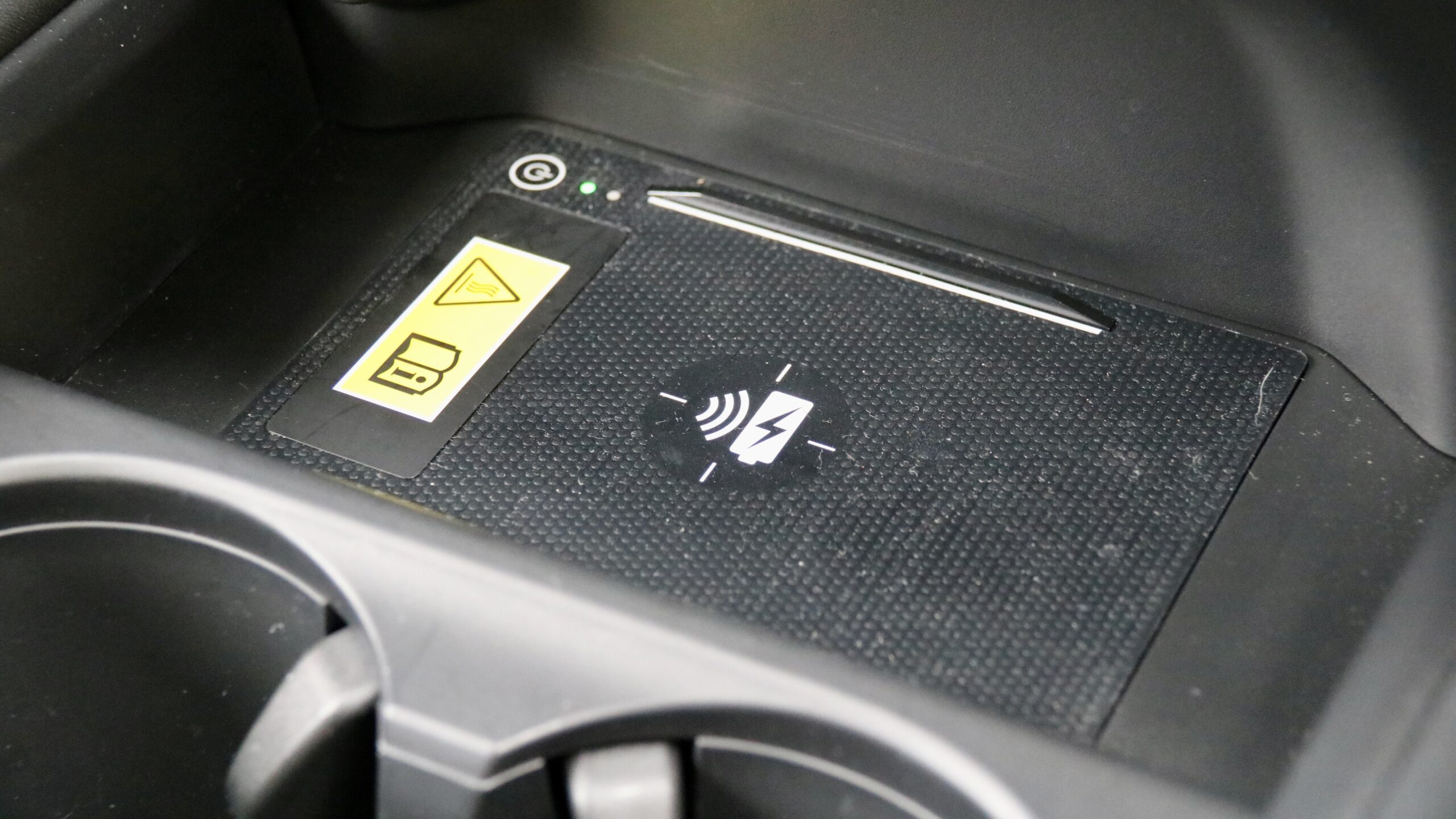
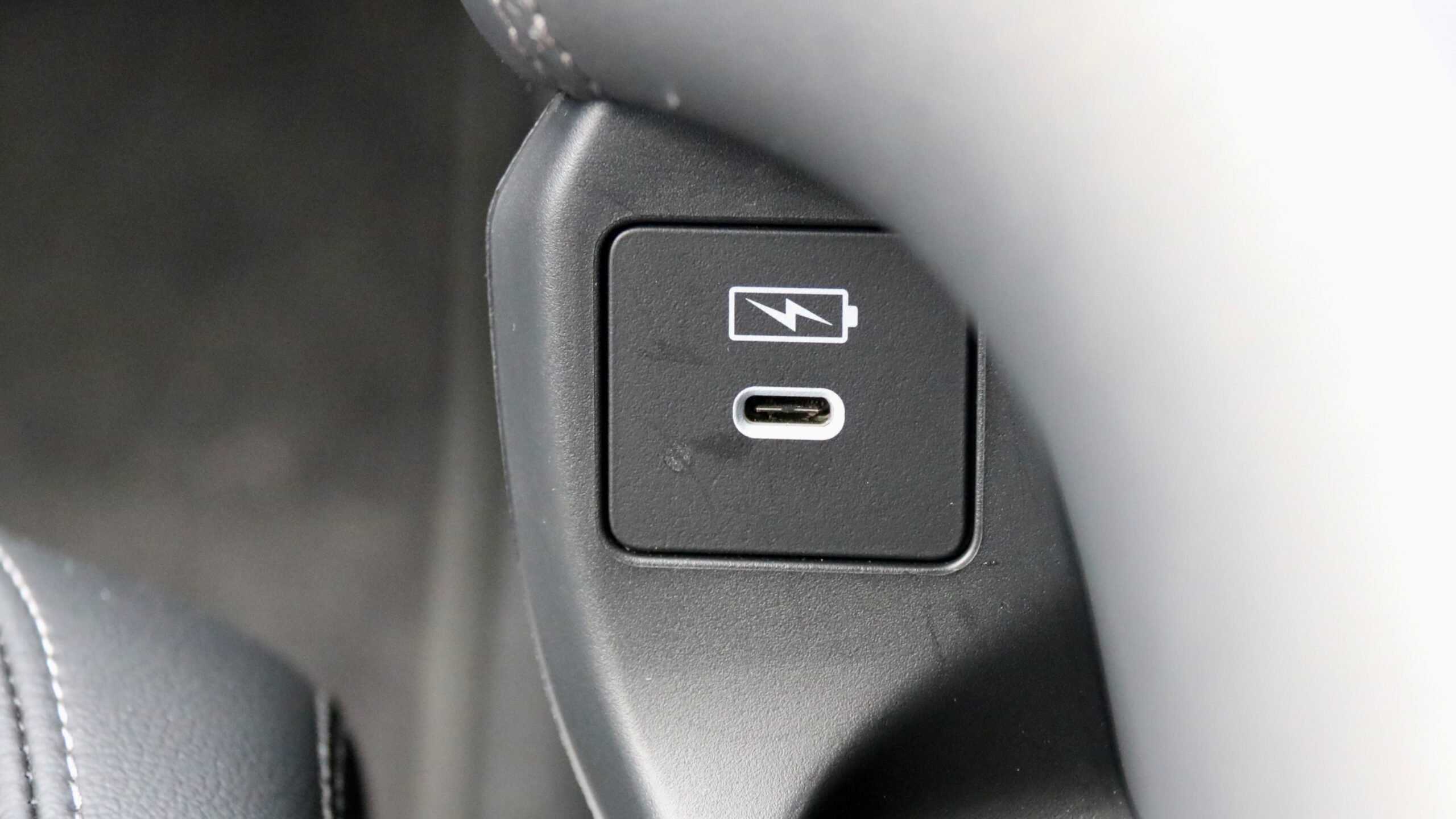
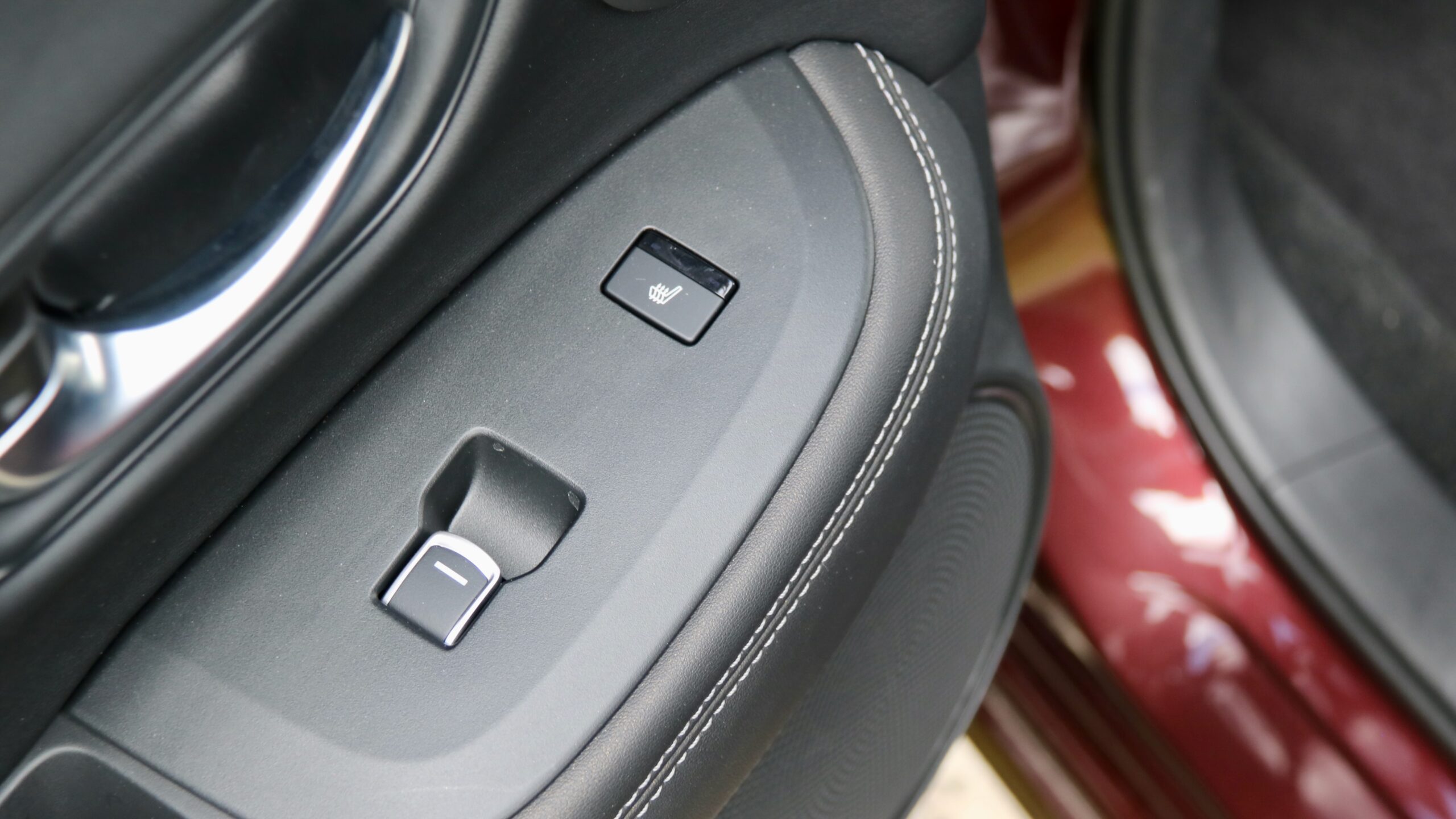
The back seat of the ZR-V is a nice place to spend time – it’s roomier than both the Qashqai and Corolla Cross and is well equipped with air vents, two USB-C charging ports, heated outboard seats, a centre arm rest with cup holders, two map pockets, reasonable door bins and soft touch materials atop the doors. There are also two ISOFIX points and two top-tether points for child seats.
Both the leg and headroom on offer are impressive for its size, and two six-footers will be quite happy there. Unfortunately, Honda’s ‘Magic Seats’ – where the seat base folds up to carry tall things in the back seat – from the HR-V and Jazz do not feature on the ZR-V, but the seat base does fold down with the backrest for a relatively flat floor when folded. The flat is far flatter than the huge step in the Corolla Cross and because of that, we think it’s more practical.
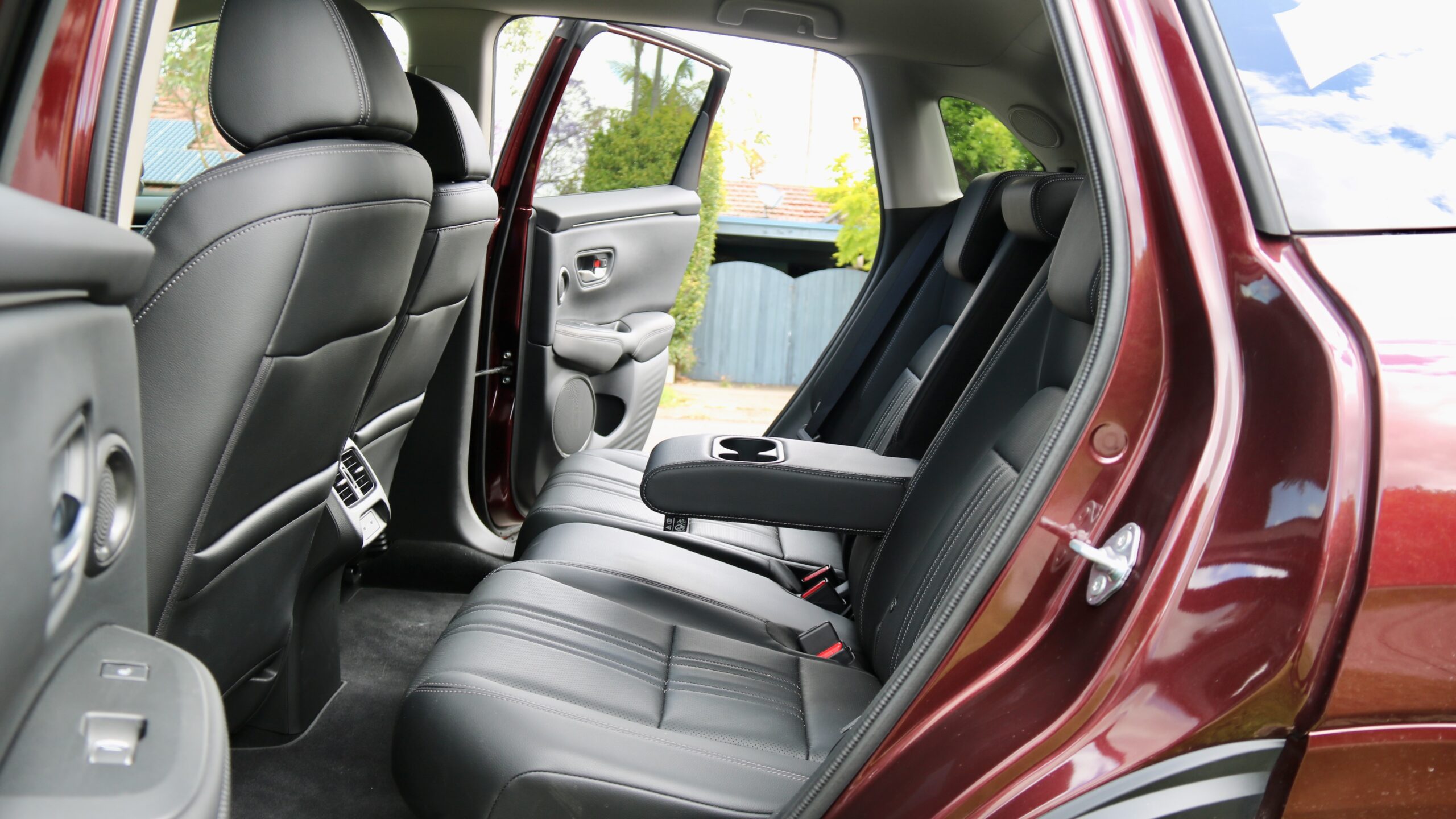
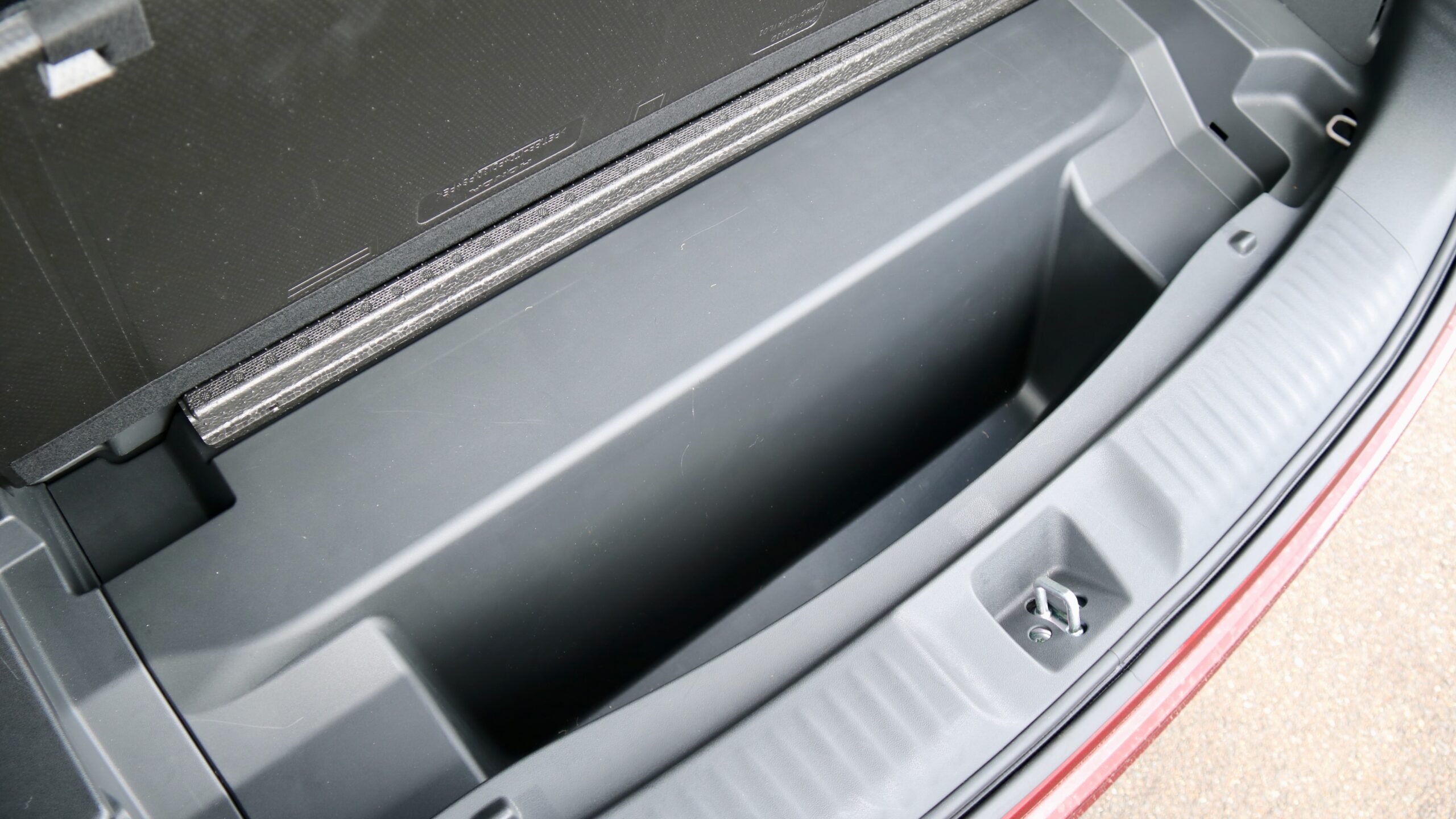
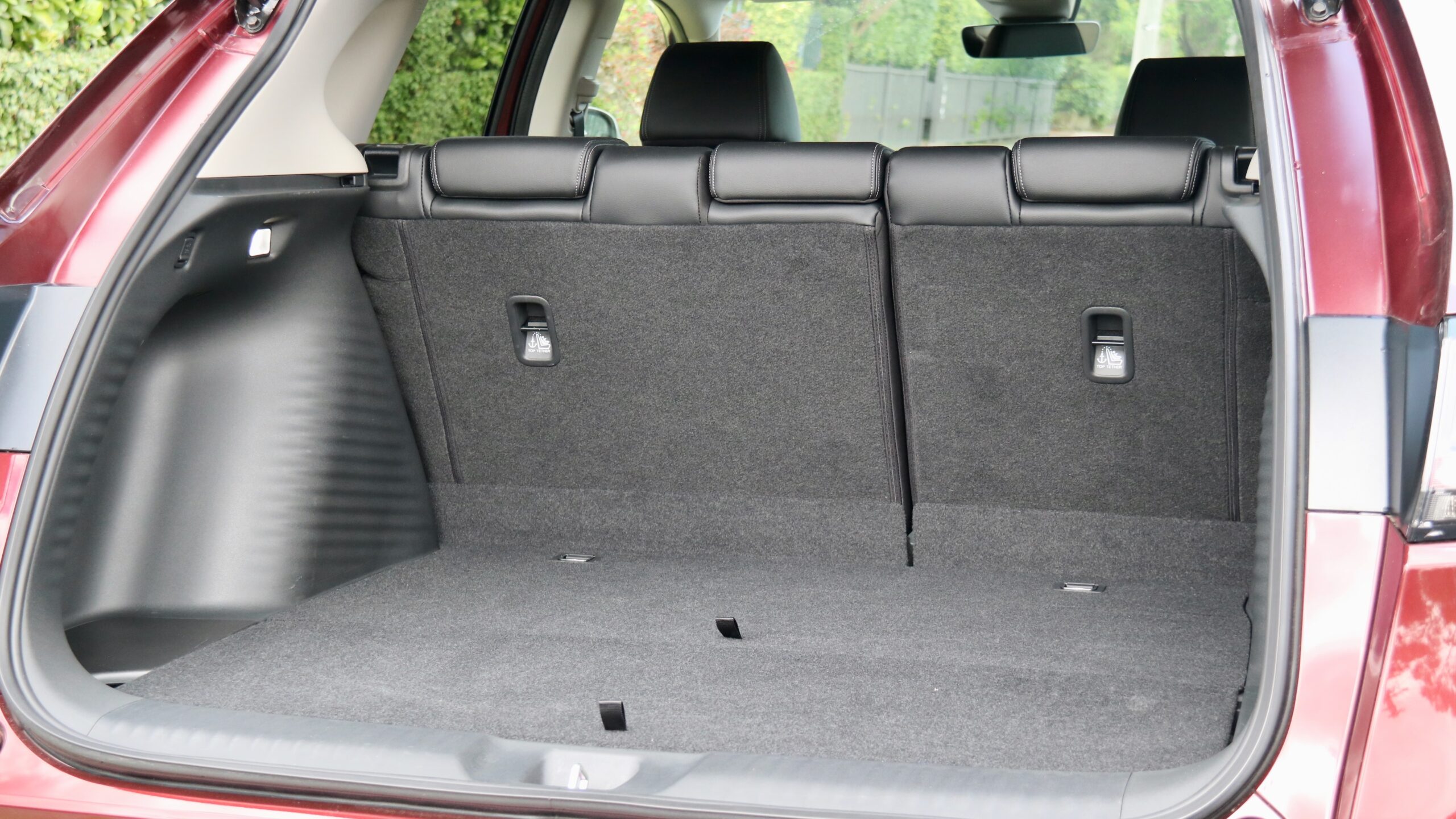
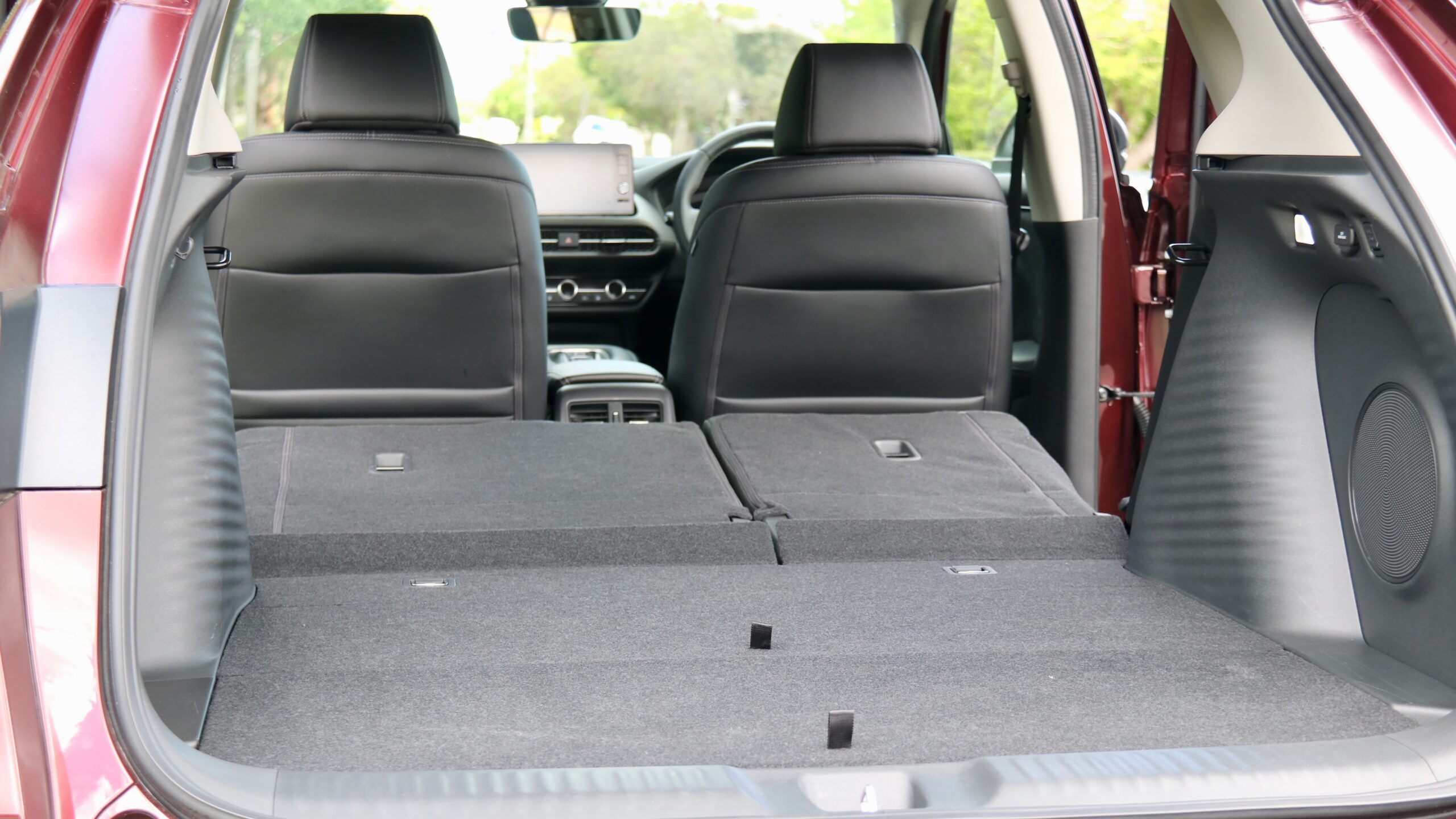
The boot of the ZR-V measures 370-litres with the seats up and 1,302L with them folded – not tiny but still a way off the Corolla Cross’ 414L and Qashqai’s 452L boots. But helping the ZR-V’s cause is a well thought-out space, including underfloor storage, a sectioned main boot floor, side storage, hooks to hold shopping bag hooks and genuinely the best boot lighting we’ve ever encountered, with bright LED lights even on the tailgate. The hybrid ZR-V features no spare wheel, unlike the Corolla Cross and Qashqai.
What warranty is offered with the 2023 Honda ZR-V e:HEV LX?
As with other new Honda products, the 2023 Honda ZR-V e:HEV LX is equipped with a five-year/unlimited km warranty with five years of roadside assistance and an eight-year/160,000km warranty for the battery. Five years of servicing costs just $995, though that’s only to 50,000km and competitors offer longer service intervals for those driving further annually.
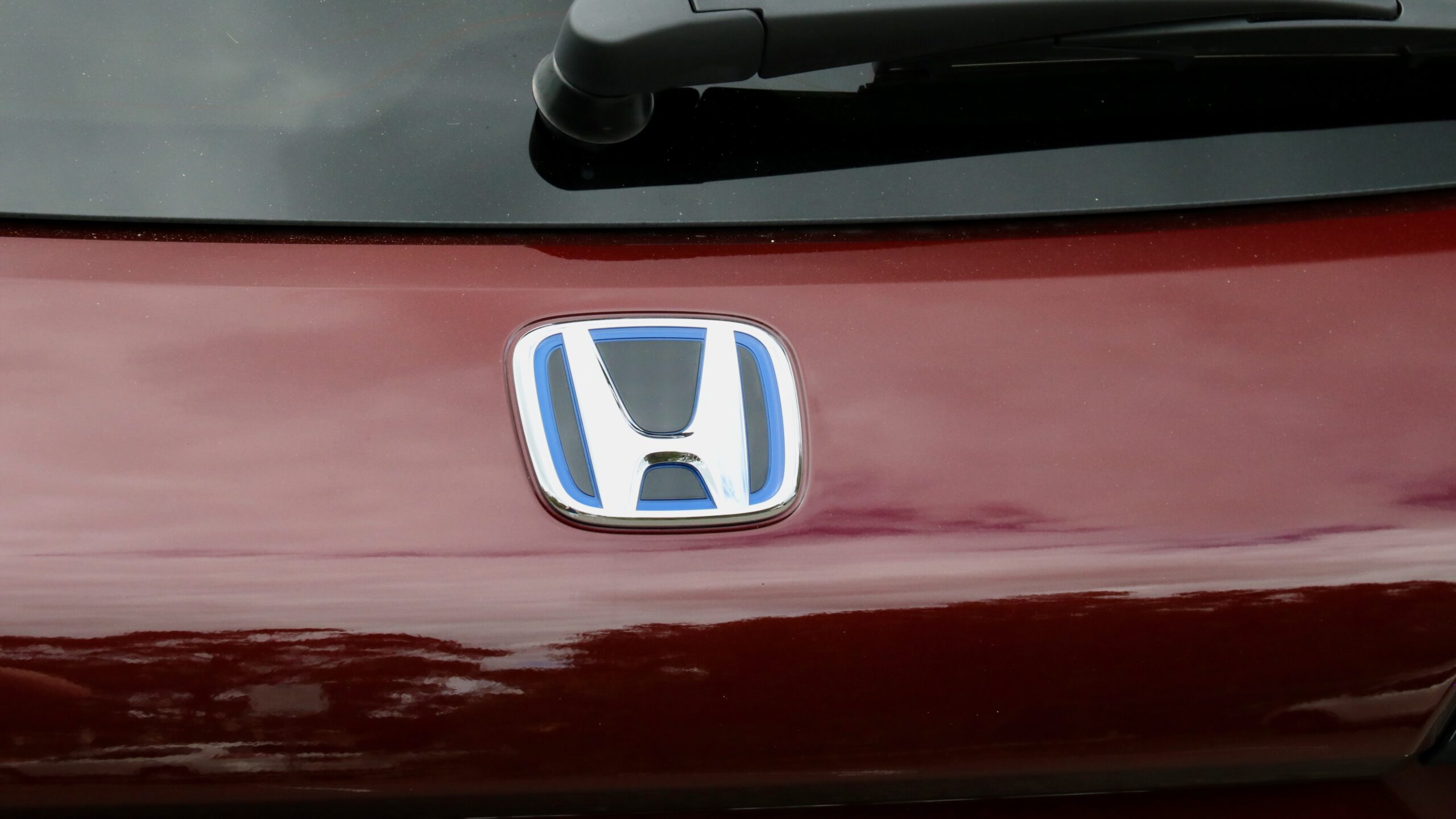
Both Toyota and Nissan also offer a five-year/unlimited km warranty and if the Corolla Cross is serviced to logbook requirements too, that’s increased to seven years in total for the mechanical parts, while the battery warranty is extended to 10 years in total if an annual battery inspection is carried out. Nissan’s battery warranty is eight years/160,000km, like the ZR-V. Five years of servicing costs $1,250 for the Corolla Cross (just $250 per service) and $2,917 for the Qashqai ($583 per service) and both have longer 15,000km service intervals.
Should I buy a 2023 Honda ZR-V e:HEV LX?
Overall, like its Civic sibling, we think that the hybrid drivetrain adds a lot to the 2023 Honda ZR-V e:HEV LX. In addition to the ZR-V’s qualities like its great quality, long list of equipment, good practicality, cheap servicing and good driving dynamics, the hybrid drivetrain in the ZR-V is smooth, refined, reasonably punchy and quite efficient as well.
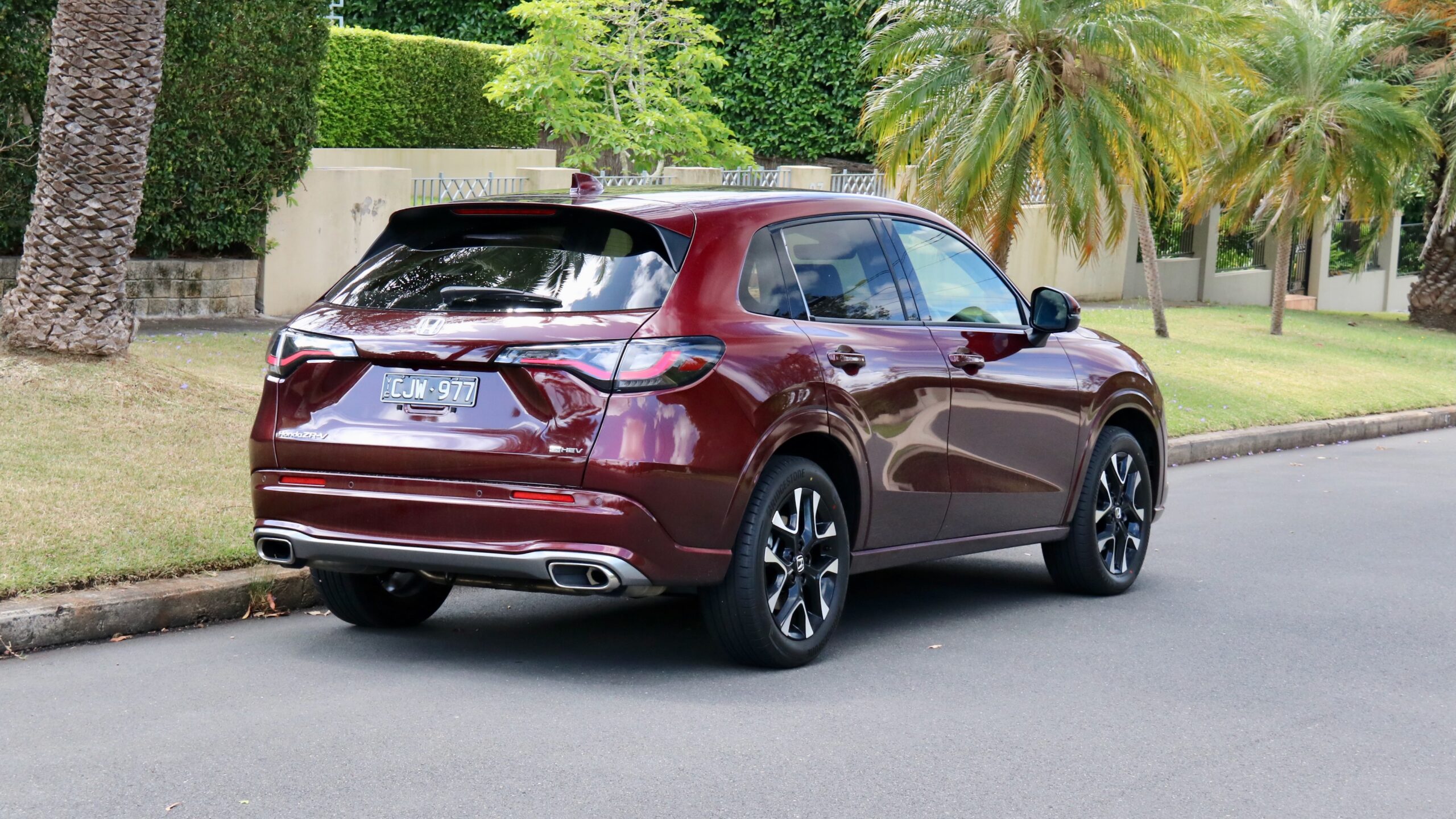
Aside from the not-huge boot, the price premium for the hybrid and that it should have equipment like a sunroof, lumbar adjustment and roof rails, the ZR-V hybrid’s biggest faux pas is that it’s not available in a less expensive spec. Part of the reason that hybrids sell so strongly in the Toyota range is that they’re available on every spec for a range of budgets and that they’re generally only around $3,000 more expensive than the petrol equivalent, but ZR-V buyers must spend the most to get the most efficient engine in the range and while the LX is well equipped, it’s also not cheap at almost $55,000 drive away. However, if that’s in your budget, we think the ZR-V is pretty good buying and hope that a cheaper hybrid model is added soon.
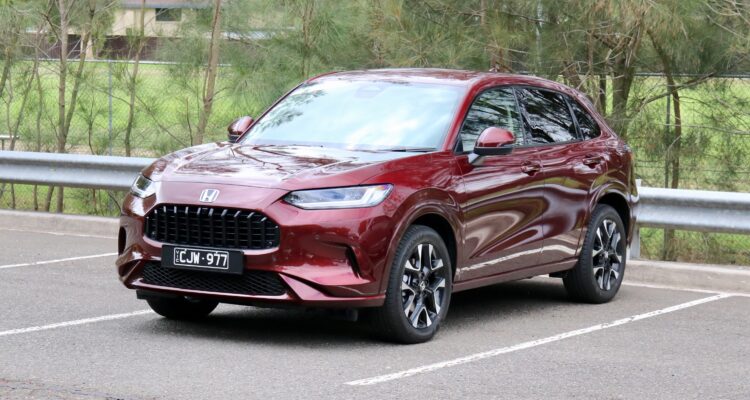
Leave a Reply